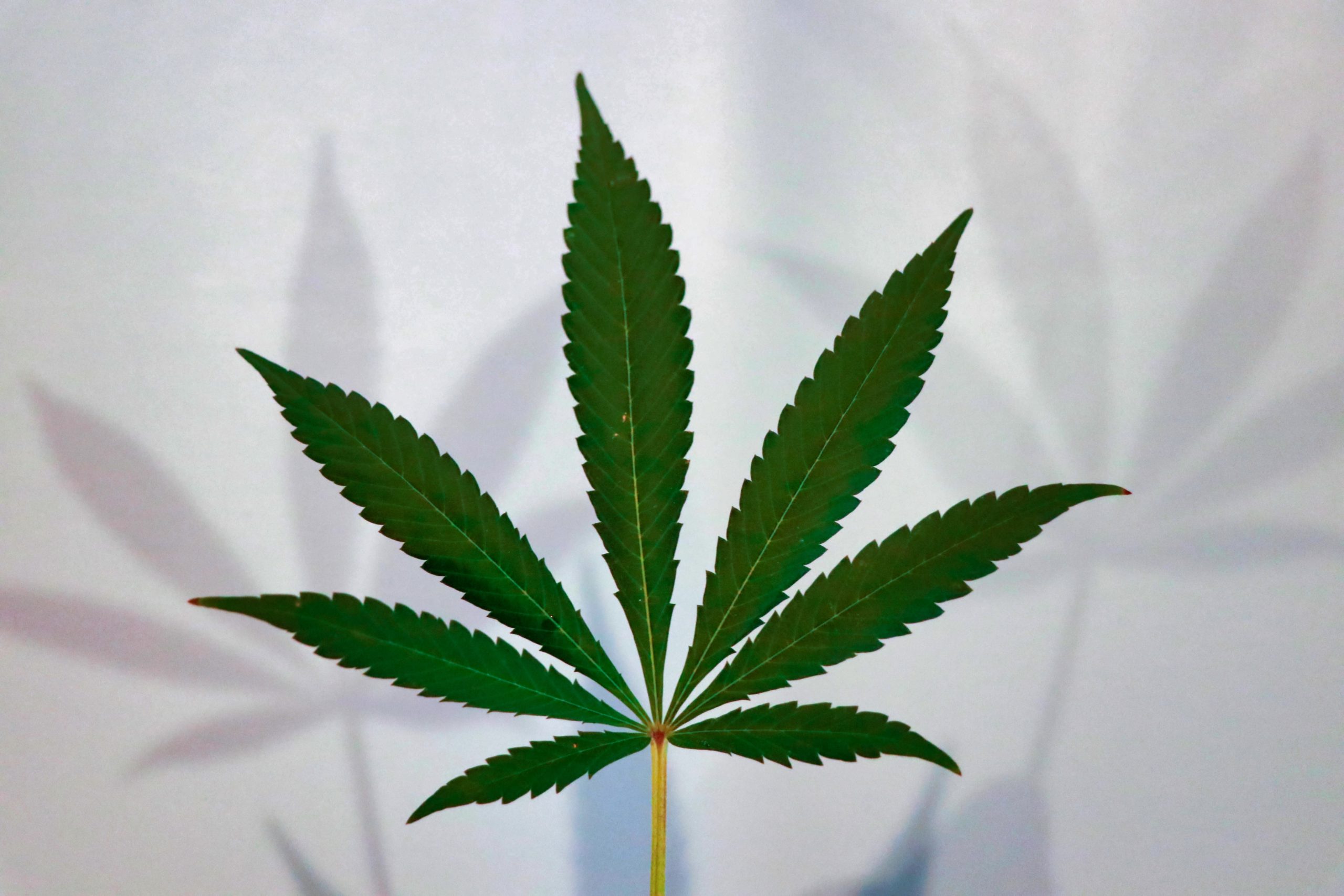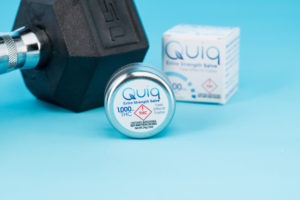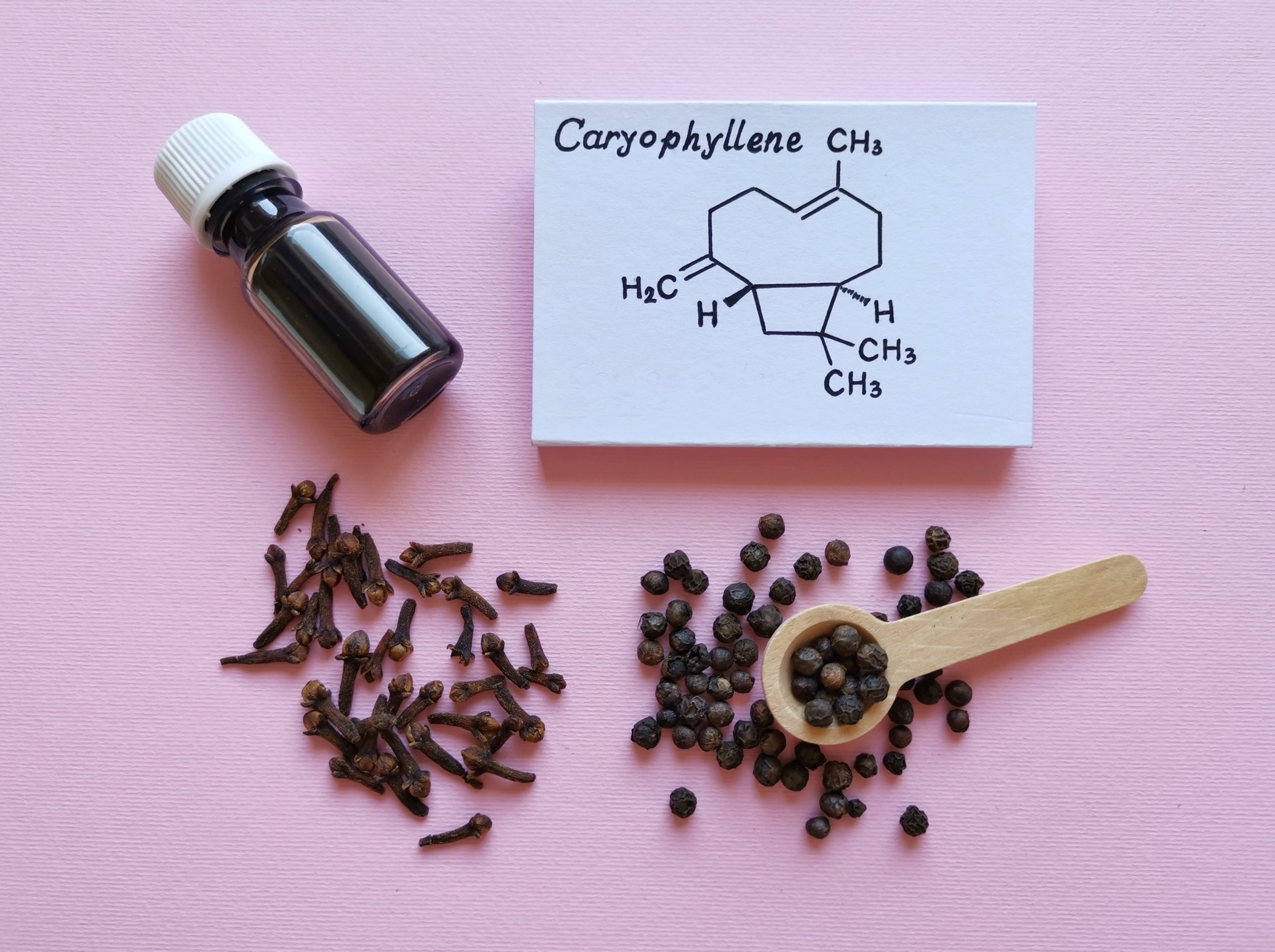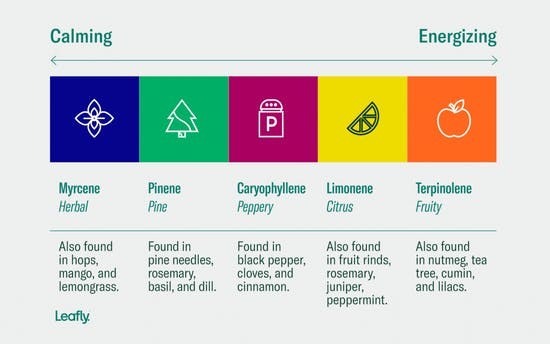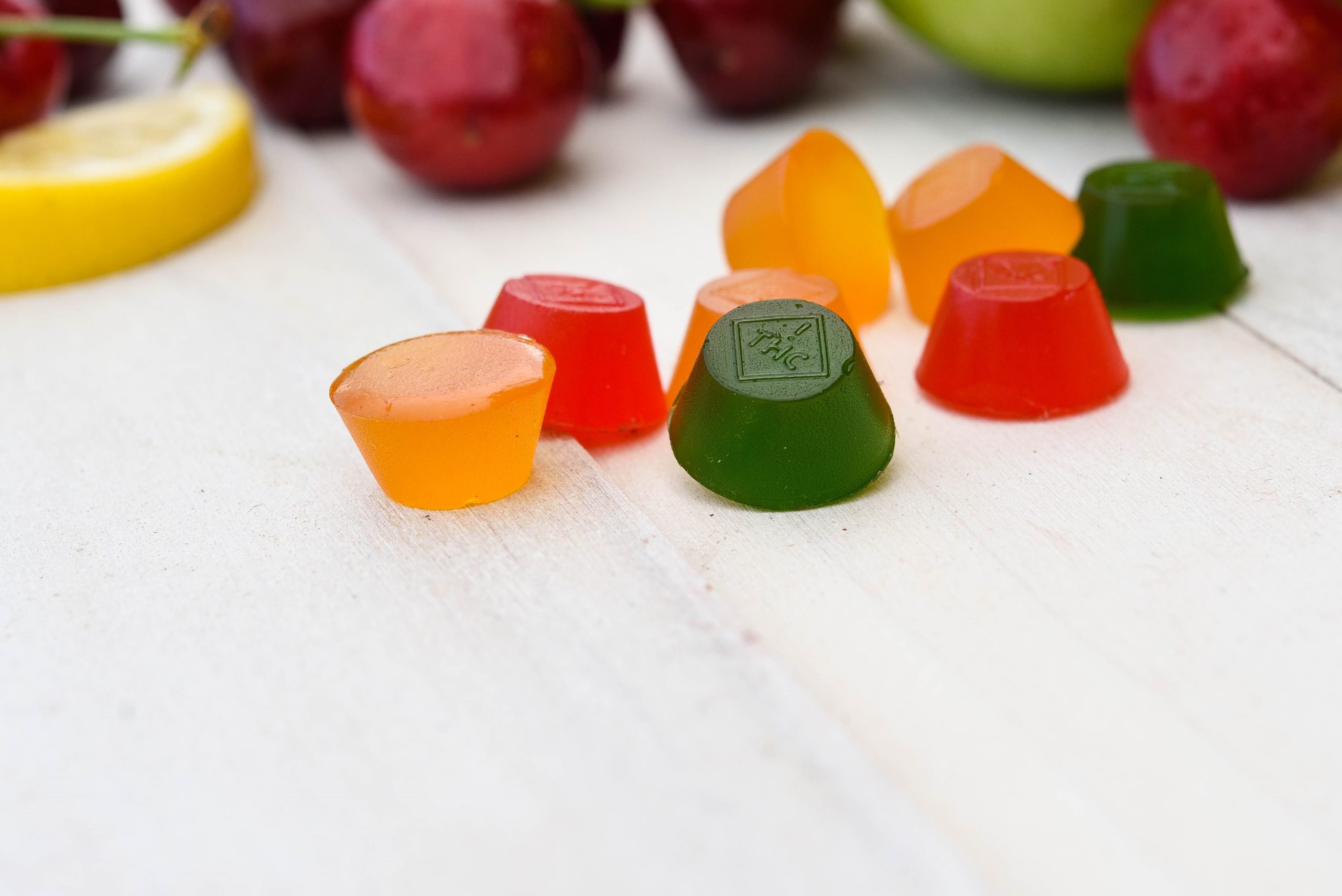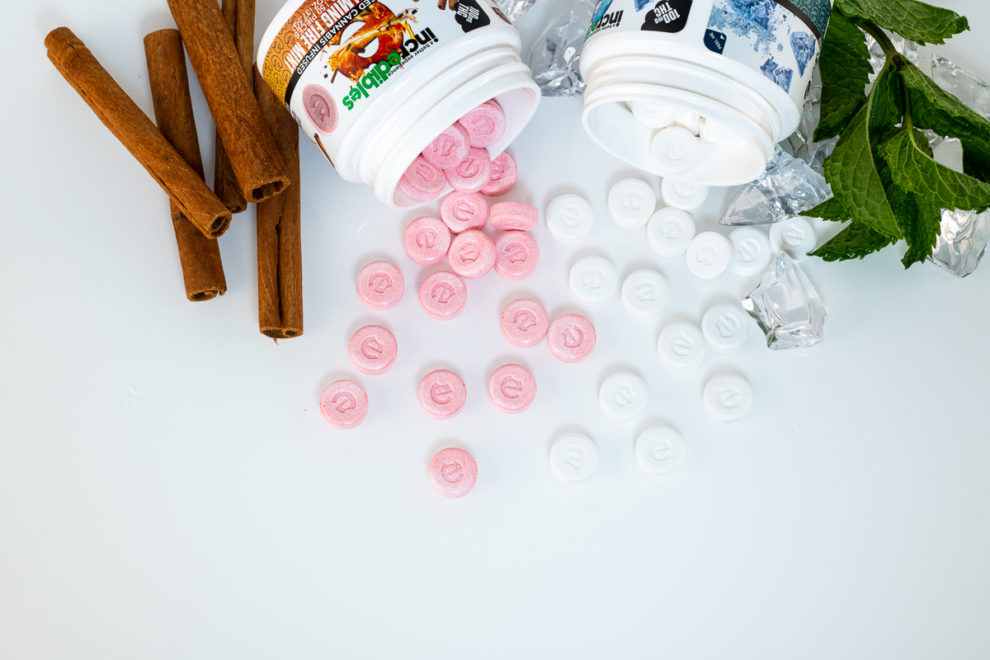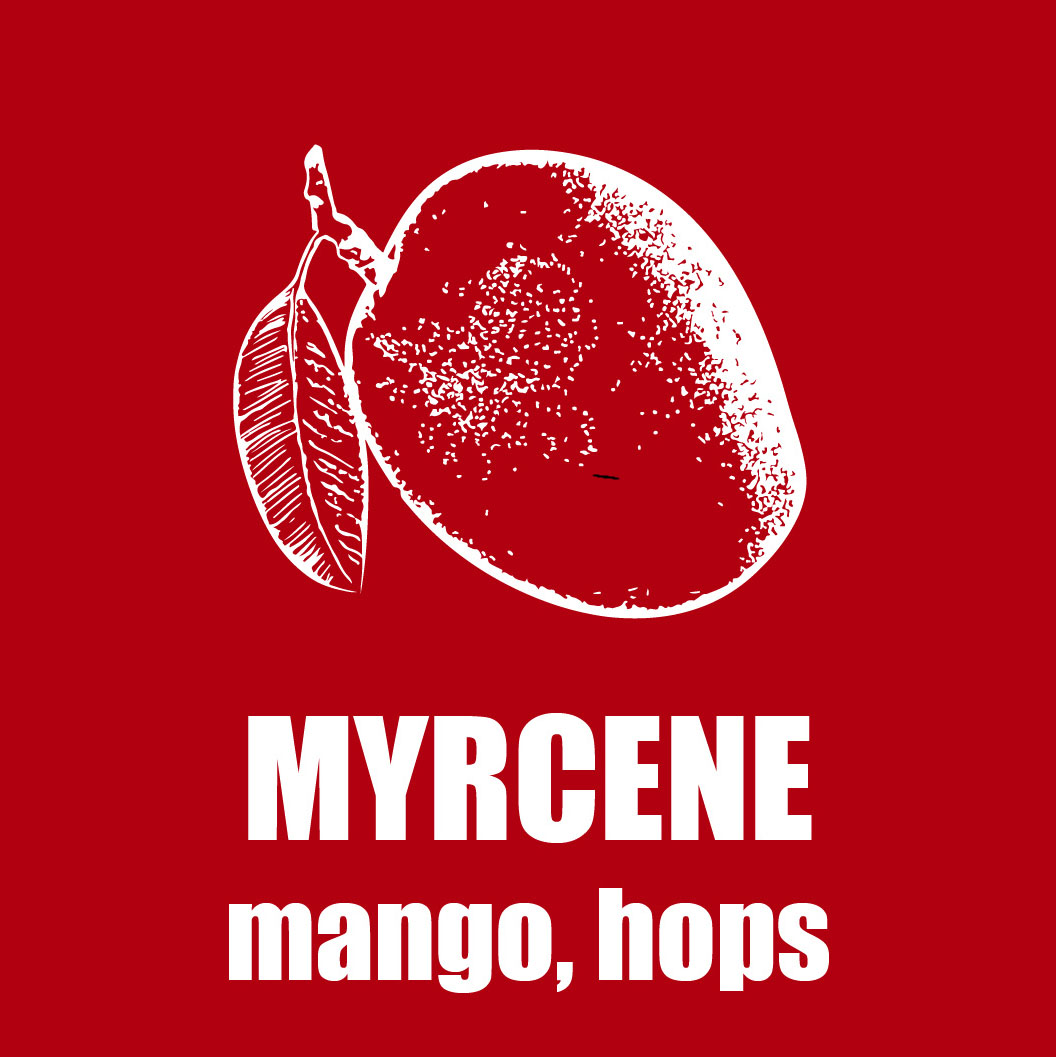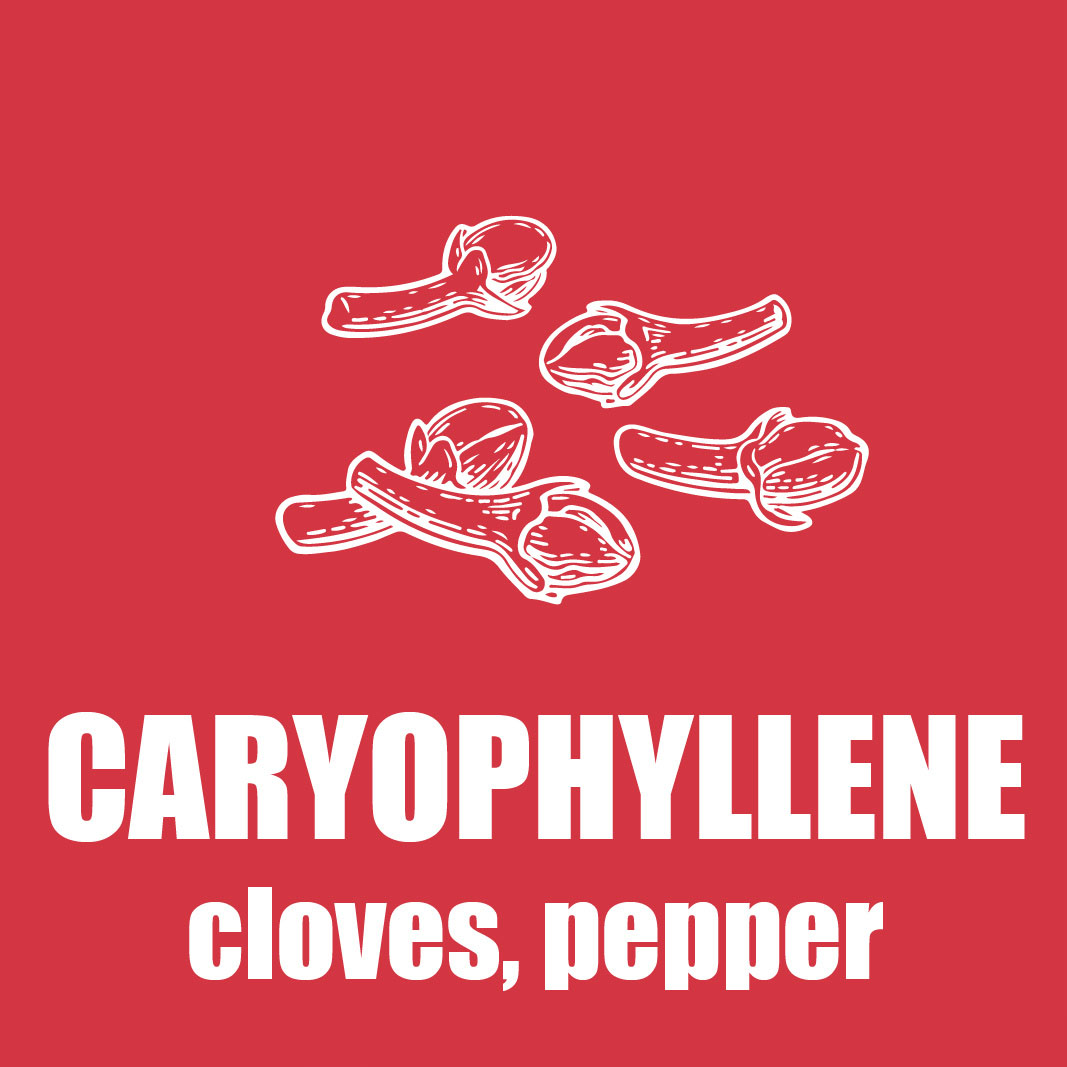Cannabis for Pain Relief: What Does Science Say?
Believe it or not, pain relief is the most common reason people seek cannabis! A 2019 study published in Health Affairs showed 62% of medical cannabis patients are looking to ease their chronic pain.
“We now know that chronic pain is indeed the most common qualifying condition for which people obtained medical cannabis licenses. Given the context of the opioid epidemic and the consistent observational studies that report medical cannabis patients substituting cannabis for pain medications, we now have a better sense of how widespread that practice and rationale may be,” said the study’s lead author, Kevin Boehnke, PhD.

Cannabis and the opioid crisis
It’s no wonder why people are putting down the pills and picking up the hippie green plant instead. When it comes to abusing opioids, there’s a common justification: “My doctor prescribed me this medication. Therefore, I am not addicted.” It’s an easy lie to believe because your doctor did prescribe you that pill. Why would they give you something that could hurt you?
It’s important to keep in mind, just because something is prescribed to you by a physician, doesn’t mean it comes without risks. Check out some of these sobering statistics from the U.S. Department of Health and Human Services about opioid misuse:
- In 2019, it’s estimated that 10.1 million people aged 12 years or older misused opioids over the prior year. Specifically, 9.7 million Americans misused prescription pain relievers, while the remaining 745,000 people used heroin.
- More than 760,000 Americans have died since 1999 from a drug overdose. Two out of three overdose deaths in 2018 involved an opioid.
- The national rate of opioid-related hospitalizations was 297 per 100,000 population in 2016.

Can I overdose on cannabis?
Currently, cannabis has not been proven to be the cause of any fatal overdose.
This set of parents, for example, tragically lost their 22-year-old son unexpectedly. They firmly believe cannabis was responsible for their son’s death, as it was found in his system when he died and he was an advocate for the plant. Despite this belief, the examiner who conducted his autopsy concluded cannabis did not cause his death, and doesn’t list it as the cause of death on his death certificate. While experts might point out other side effects to watch out for after consuming cannabis, such as paranoia, racing heart, potentially distorted vision, etc., nearly all of them agree that overdosing on cannabis just isn’t possible. This pair of grieving parents, unfortunately, did lose their son to a heart attack, according to the examiner.

What does science say about cannabis for pain relief?
So far, the FDA has not approved cannabis to cure or treat any disease, and that includes chronic pain. With that being said, there is an enormous amount of research and anecdotal testimonies that support cannabis for pain relief. This research sparked the installation of medical cannabis programs in over half the country, with surely more to follow! In terms of credible research rooted in scientific processes, here’s what we know about cannabis and pain so far:
- A 2016 research paper discovered cancer patients used 64% fewer opioids for cancer-related pain when medical cannabis was integrated into their routine.
- This piece of research also notes:
- Cannabis consumption was associated with a better quality of life in patients with chronic pain
- Cannabis came with fewer side effects and medications used
- This piece of research also notes:
- Harvard University says cannabis seems to ease the pain associated with multiple sclerosis, as well as general nerve pain.
- This 2015 review exploring cannabis to relieve pain found several of the conducted trials yielded positive results. The trials focused on patients with chronic pain, neuropathic pain, and multiple sclerosis. “Marijuana or cannabinoids may be efficacious for these indications,” reads the study.
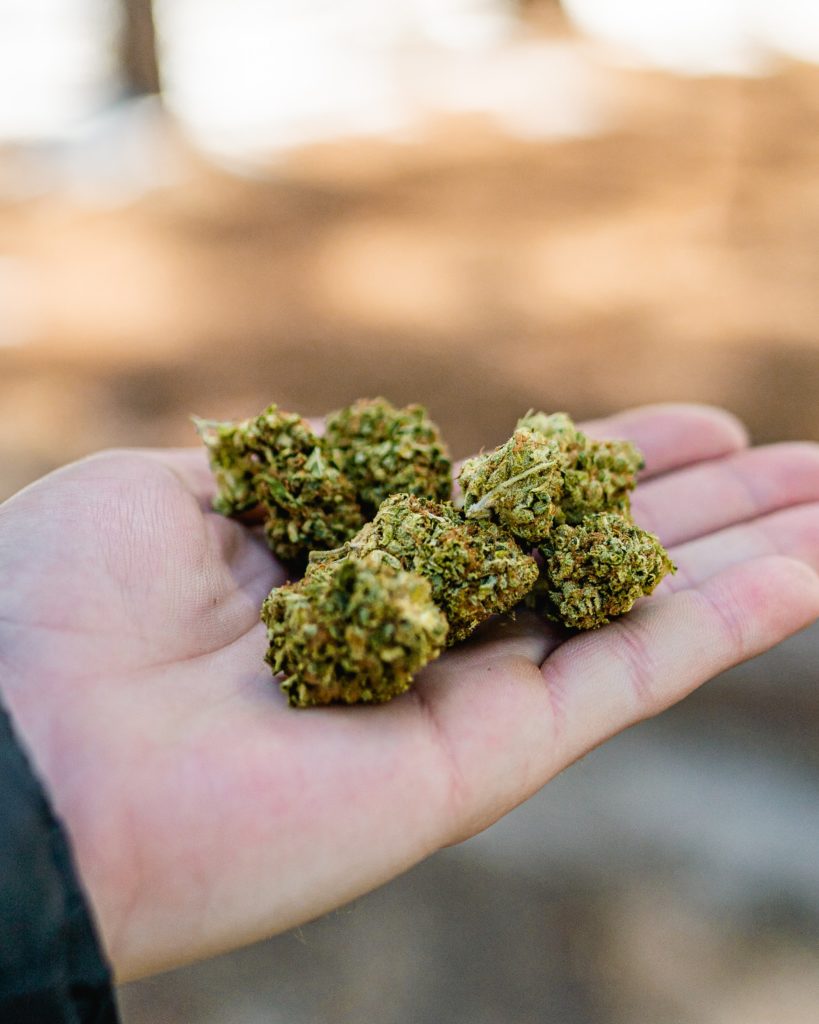
How does cannabis for pain relief work?
Let’s first talk about cannabinoids like the above study briefly mentioned. Cannabinoids are compounds found in the cannabis plant; there are over 100 known ones, but you might know the most popular ones as CBD and THC. To keep it simple, THC is the compound responsible for creating a high. CBD won’t intoxicate you, but it’ll give you a lot of the same benefits THC does!
Once these cannabinoids enter the body, they meet something called the endocannabinoid system. The endocannabinoid system is a biological system every human being has. The endocannabinoid system is equipped with receptors, CB1 and CB2 receptors to be specific, and they interact with cannabinoids like THC and CBD.
THC fits the CB1 receptor perfectly. You’ll find heavily concentrated areas of the CB1 receptors in the brain stem, spinal cord, nervous system, and other parts of the body. The CB2 receptor engages a lot with CBD, but they don’t directly fit each other like CB1 and THC. Find CB2 receptors in our vital organs, immune cells, the brain, our skin, digestive system, and more.

The endocannabinoid system continued
Experts believe the endocannabinoid system is responsible for bringing our body to homeostasis and restoring balance in the areas where we need it the most. That’s why you hear people recommending cannabis for so many different issues: because we have endocannabinoid receptors in basically every part of our body! Cannabinoids are a direct target to those receptors.
Don’t believe us? We don’t blame you, because you haven’t heard much about the endocannabinoid system. Modern medicine doesn’t talk about it, much less make it a part of their treatment plan. However, universities like UCLA have even devoted an entire research initiative to the endocannabinoid system, with plenty of content to learn from already! We also mentioned Harvard’s opinion on cannabis for pain relief in the above section highlighting credible pieces of research. So yes, the endocannabinoid system exists and there’s thorough research to prove it!
But no, you probably won’t hear about it from your doctor unless you ask. That’s not necessarily the doctor’s fault, though. Cannabis is still federally illegal to this day, despite over half the country legalizing it in some fashion. This makes things infinitely harder for physicians, whether it’s a professional stigma or they simply don’t have the necessary research that federal funding would be able to provide.

How do I consume cannabis for pain relief?
This is a great question, because there isn’t just one answer! Typically, when people (new consumers) think of cannabis, they think of smoking it. Thankfully, that’s not the only way to get your daily dose of cannabinoids. Smoking isn’t ideal for people with asthma or those who are uncomfortable inhaling smoke. Cannabis is versatile, so the way you consume it can be, too! Here are some of the best ways to try it if you don’t want to smoke:
- Grab an infused-bite from award-winning edibles company, incredibles
- Use a topical! Cannabis-infused topical products target the endocannabinoid receptors in our skin to offer direct relief for pain, like this fast-acting Extra Strength Salve from Quiq.
- Try a CBD product. Hemp-derived products like this chocolate bar from trupura CBD are a great option for people who don’t want to consume THC!
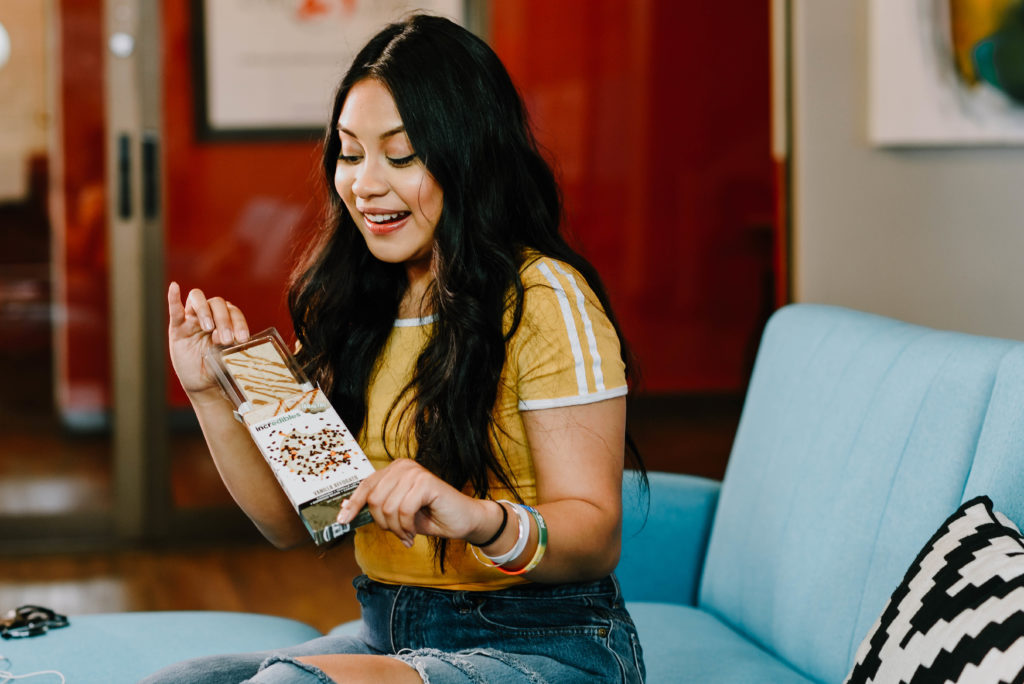
Explore different types of pain relief and shop online through Medically Correct! We always recommend consulting with an educated physician who knows your medical history before proceeding. Consider speaking with a licensed, cannabis-trained nurse at Leaf411 for a free evaluation.
Cannabis and Older Adults: Finding Your Ideal Solution Among Today's Product Selection
Senior citizens looking to improve their quality of life are making a beeline for the marijuana dispensaries!
Older adults over age 60 are among the fastest-growing group of cannabis consumers in the United States. A study published in the Journal of the American Medical Association found only 0.4% of adults age 65 and older reported using cannabis products between 2005-2006. By 2015, that percentage doubled and then doubled again in 2018 to nearly 4.2%.
The continued rise in elderly patients who are ‘cannacurious’ means there’s an even bigger need for good educational resources. With the correct information, older adults can feel more confident and safe when deciding to include medical marijuana into their lifestyle.
How Has Cannabis Changed Over the Years?
Interest in medical marijuana has increased thanks to reduced stigma, state legalizations, and newly discovered research on the benefits of cannabis for specific conditions primarily afflicting elderly patients. Some older adults enjoy cannabis recreationally to help them stay physically active. Many more use medical marijuana and CBD for chronic pain, sleeping problems, and mental health conditions like anxiety and depression.
Looking back, we see just how much cannabis has changed from the ‘60s and ‘70s compared to today’s market. No more kilo bricks and meeting behind the school to toke up before class. Cannabis consumption has transcended beyond the average stoner. Not only has the flower become more potent, but experts say there are over 700 unique cannabis strains!
Probably the most crucial aspect that has changed is the rigorous lab testing required for all medical and recreational marijuana products. Consumer safety is one of the biggest factors for every cannabis business and dispensary. The industry as a whole is still relatively new, and regulations vary from state to state. Lab testing ensures all cannabis products being placed on the market are of high quality and contain no residual contaminants, such as pesticides or heavy metals.
Testing also helps determine the potency and terpene profile to ensure safe consumer experiences. Terpenoids are the aromatic oils found on the plant. These molecules are also responsible for the flavor you will taste whether you smoke flower, concentrates, or vape, and influence the effect of the product.
What Cannabis Products Work Best for Older Adults?
It’s your first trip to the dispensary, and what do you see? Options upon options. How do you know what will work best?
Walking into a dispensary can be overwhelming and intimidating. Seeing all the various products and the scores of young patients might have you wondering if cannabis is right for you. Rest assured, you’re not alone in your thoughts. That’s why having the right knowledge is essential to make sure you have the best experience possible.
The dispensary workers are trained to understand the differences, benefits, and disadvantages of every cannabis product sold in-store. Here’s a summary of the options many older patients choose to try:
- Edibles - Cannabis edibles are foods or drinks infused with THC and/or CBD that let you enjoy the effects of marijuana without needing to smoke or vape. Edible gummies and chocolate are popular choices for older patients because they’re easy to consume and discreet.
It can take 30 minutes to two hours for the effects to kick in versus the immediate effects of smoking marijuana, but one edible can last you almost an entire day without needing another dose! The most common phrase you’ll hear for first-time cannabis users is, “start low, go slow.” Edibles with 2.5mg of THC are a recommended starting point for first-time cannabis users
- Topicals - Cannabis-infused balms, lotions, and oils offer the therapeutic benefits of marijuana without the high. Topicals are the most popular choice for localized pain relief, soreness, and inflammation. Some evidence shows they may even help with psoriasis, dermatitis, and arthritis.
- Patches - Transdermal patches are akin to nicotine patches, but instead, you’re getting a slow release of cannabinoids, the active ingredients found in cannabis. Along with their convenience, some patches will work for over 12 hours and up to 96 hours!
- Tinctures - Tinctures are liquid cannabis extracts that contain high levels of terpenes and cannabinoids. They can be applied under the tongue or mixed in with foods and drinks. Tinctures are fast-acting and are delivered using a dropper for easy dosing.
What Are the Potential Risks for Seniors Using Cannabis?
Just like with any other medicine, there are potential risks and harmful side effects from using cannabis. Impairments with attention span, motor coordination, and verbal memory can be amplified in older patients with preexisting brain impairments and struggle with pulmonary and cardiovascular conditions. Other seniors reported experiencing dizziness and fatigue. Some studies show it could also be harmful to those who recently had a heart attack.
Another point to consider is how cannabis interacts with other medications. It may cause certain medicines to stop working or lead to an increase in their side effects.
Change in marijuana itself from what it was in the ’60s and ’70s also makes others wary of trying it. The potency has gradually gotten much stronger, and some worry that older patients won’t take dosing seriously because they remember what it was like when they first tried weed.
However, many seniors have said these risks are avoidable by carefully dosing and monitoring your medication schedule. Cannabis has already become a suitable replacement to other pharmaceuticals for many older patients, especially those who were already experiencing adverse side effects from extended medication use.
Even with all the well-deserved recognition cannabis receives, you must always speak to your physician first before trying medical marijuana. Or, you can consult with Medically Correct’s nurse hotline partners at Leaf 411. This free cannabis hotline consists of trained nurses who provide education and directional support about legal cannabis use.
Cannabis Product Selections for Seniors Are Better Than Ever!
Older adults deserve well-crafted cannabis that suits their needs just as much as anyone else. Whether you’re a newcomer or are no stranger to the world of cannabis, Medically Correct offers a wide range of products from award-winning brands. Our edibles, vapes, topicals, and more are created by some of the top experts in the business.
We’re committed to supporting the health and wellness of our consumers, young and old!
What Are The Best Terpenes? Here's How To Experiment and Discover Your Perfect High
Ever wonder why you feel vastly different from various strains of cannabis, even if their THC and CBD content are the same? It’s the terpenes! As science continues to unveil the mysteries of cannabinoids, terpenes are gaining a lot of attention, and for good reason.
Since the early days of the cannabis industry, strains were primarily classified as Indica, Sativa, or Hybrid, labeled as such due to the common experiences of a body high, head high, or somewhere in between, respectively. Yet science is finding these classifications to be quite rudimentary and as terpenes are being analyzed further, what’s been revealed is that the role terpenes play within cannabis drive the experiences we humans receive, and that they’re critical components to the medicinal effects of cannabis.
Short refresher: Terpenes are the oily compounds within the cannabis trichomes that give the plant its smell and taste, similar to essential oils. (“Terpenoids” is often used interchangeably with “terpenes,” the main difference being that terpenes are hydrocarbons [carbon and hydrogen only] while terpenoids have been denatured by oxidation [chemical modification or drying and curing the flowers].
How would you like to be able to choose your ideal strain by identifying which terpenes are best for you? We’ll share with you how, so read on!
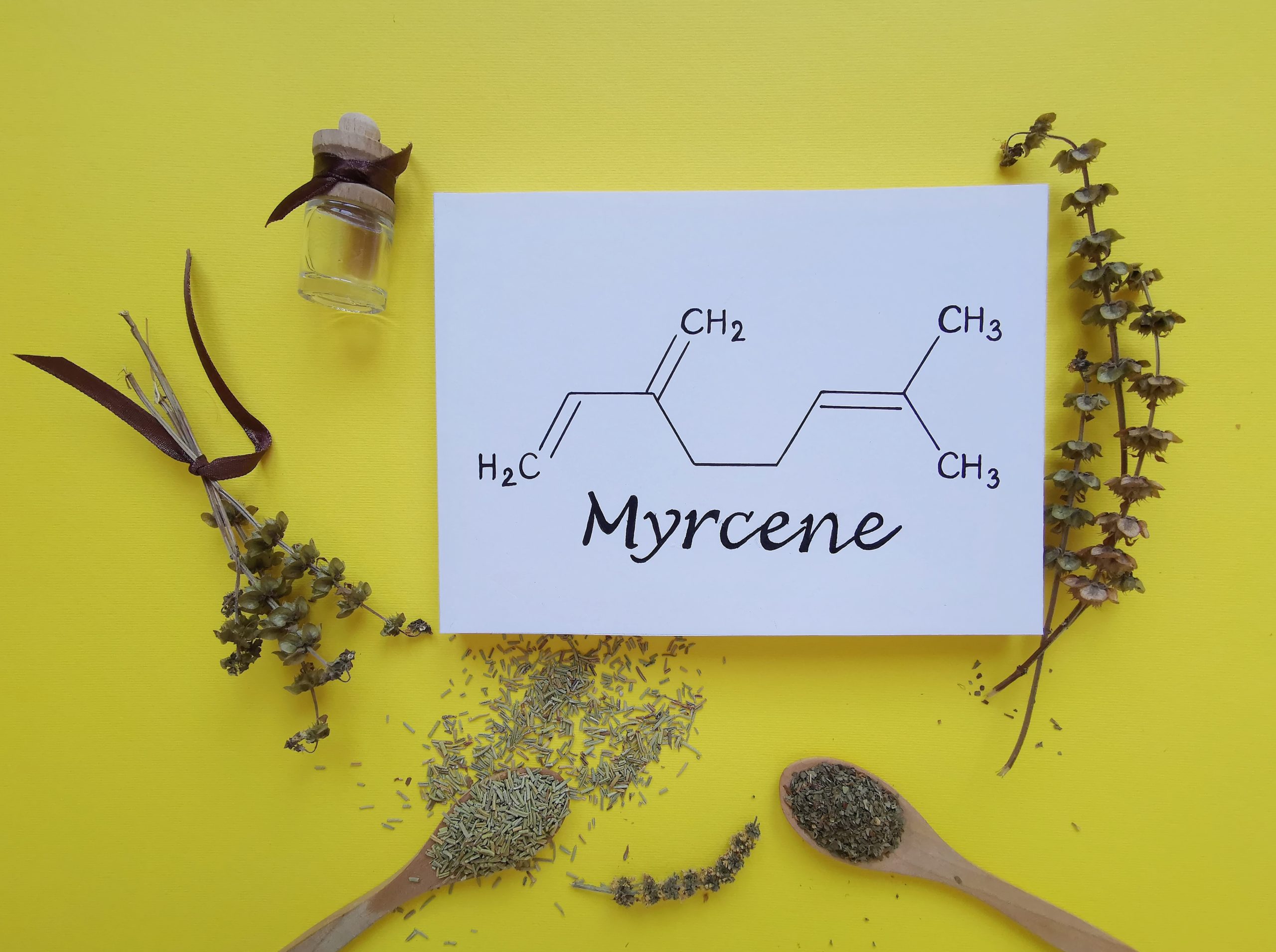
How to Dial in Your Ideal Cannabis Strain Based on its Terpene Profile
At this point in time, somewhere between 120 – 200 terpenes have been discovered within the cannabis plant and of these, a small handful have been researched. The findings are somewhat limited so far, but as research continues terpenes will become an even more precise way to identify your ideal strains.
For now, there is enough information to help guide you, and once you learn about the known potential therapeutic properties of each of the most common terpenes found in cannabis, you can start choosing strains based on how you’d like to feel.
Step 1: So, how do you want to feel? Determine this first so you know what you’re looking for as you learn about the most common terps. Here are some questions to help get you started:
- Are you looking to mellow out, yet stay clear headed and productive?
- Are you looking to relax your mind and body so you can fall asleep more easily?
- Are you looking for inflammation reduction and pain relief?
- Are you looking for something to energize and uplift your spirits?
- Are you looking to reduce anxiety?
- Are you looking for creative enhancement and focus?
Step 2: Determine your terpene preferences
A great place to start is reviewing a chart of the most common terpenes and where they reside on the spectrum of calming to energizing (see below). You can also perform an internet search of cannabis terpenes and gather information from various sources.
Step 3: Look up each terpene and learn about its known potential therapeutic benefits.
Step 4: Take note of the terpenes you’d like your cannabis to contain, then search for strains which contain these terpenes. Also identify terpenes you want to stay away from and keep a note of these in your wallet or commit them to memory.
Below are the most abundant terpenes in each of the following popular strains, with the highest amounts bolded.
Super Lemon Haze: terpinolene, caryophyllene, ocimene
Sour Diesel: caryophyllene, limonene, myrcene
Blue Dream: myrcene, pinene, caryophyllene
OG Kush: caryophyllene, limonene, myrcene, linalool, pinene, and humulene
Golden Goat: limonene, caryophyllene, myrcene, pinene
Here’s an example: Let’s say you are looking for help with relieving pain and inflammation while reducing anxiety. Caryophyllene reduces inflammation which lessens pain and limonene helps reduce anxiety. From the list above, OG Kush and Sour Diesel would be the top two strains for you to try.

A More Experiential Way To Discover The Best Terpenes for You
This way can be super fun. Simply head over to your favorite dispensary and purchase a gram of each of the following: Super Lemon Haze, Sour Diesel, Blue Dream, Golden Goat, OG Kush (or you can choose your own lineup)
Next, grab some index cards (or download/print this worksheet) and smoke each one on separate days or with enough time in between so they don’t influence one another, such as one in the morning and one in the evening. For each strain, after 10-15 minutes from consumption, take this super short quiz and keep your answers to refer to later:
- Now that you’re high, what are the top three things you feel like doing?
- Which would you rather be: comfy at home or out socializing (circle one)
- Do you enjoy this strain? Yes or No (circle one)
Once you have your answers for each strain, list out the terpenes in each. You can refer to the strain examples/main terpene profiles above or if you chose other strains, consult a resource such as Leafly.com. See what trends you find within the strains you enjoy and the ones you don’t, then learn more about those terpenes so they can help guide your future buying decisions.
Fun, right? With the endless combinations and ratios of terpenes, the future of highly intelligent cannabis cultivation lies here…and there’s so much more to be revealed as research continues. We’re only at the beginning.
Check out our first blog post regarding Terpenes here.

Cannabis and Yoga: An Essential Guide To Combining Cannabis Products with Your Practice
Whether you’re a cannabis consumer, a yoga practitioner, or both, this guide will shed light on how to combine cannabis and yoga for an elevated, mindful practice. Let’s dive in!
The word yoga may conjure up an image of someone performing physical postures on a sticky mat. This is simply one way to practice yoga, called yoga asana. If you aren’t already aware, the practice of yoga has many different forms, and ultimately, it’s a practice of unification which brings the practitioner into an innate state of balance, cultivating a space where the mind, body, and breath are fully integrated with the spirit/seer – all in the same moment. Perception shifts from the lens of the ego to the lens of the higher self. This state of oneness is a direct experience of life revealing separateness as an obvious illusion.
Cannabis, along with many other sacred plants, is a tool that can offer the experience of this very same state of being. As science has shown, cannabis activates our endocannabinoid system, the system within the body that maintains homeostasis – the state of balance. It also enhances all of our senses, giving us a heightened state of self-awareness, which is an effect of practicing yoga. This writer sees cannabis as one of the best yoga teachers on this planet!

What Kinds of Cannabis are Best to Practice With?
Since most strains are labeled as Indica, Sativa, or Hybrid, this can provide some direction. Yet while there are common experiences from various strains, which we’ll get into, effects do vary from person to person so it’s important to experiment to find out what you like the most.
As aforementioned, yoga is a practice bringing together mind and body, so it’s helpful to work with a hybrid strain rather than catapulting your attention fully into your head with a sativa strain or fully into your body with an indica strain.
- A sativa-dominant hybrid can be a great partner for Vinyasa and Power yoga style classes, such as Jack Herer, ACDC, and White Widow.
- An indica-dominant hybrid may be ideal for Restorative, Yin and meditation practices, such as OG Kush, White Diesel, and Lavender.
- If you really want to dial in your ideal strain, learn about terpenes and look for strains that contain the terpenes you wish to work with.
Edibles that have an equal ratio of THC to CBD are also wonderful cannabis companions for yoga since they help to offset an overabundance of heady energy. If you’re not looking for any psychoactive effects within your practice, stick to CBD, which for most people turns down the dials of anxiety and tension, allowing an easier cultivation of presence.
When & How Much to Consume
If you plan to consume right before practice, smoking or vaping creates an immediate onset. Smoking does produce potentially harmful carcinogens, so if you’d like to create minimal harm you can choose vaping either flower or concentrate. Concentrate is much more potent than flower, so keep that in mind when dosing.
If you’ve got some time before practice, choose an edible such as a pill, sublingual spray or tincture, gummy, or chocolate, to name a few. If you don’t have enough time to wait for it to kick in, take an edible that has a quick onset, or be aware that you’ll start feeling it at some point during your practice.
For anyone just starting out, I recommend a micro dose, 2.5mg. I’ve found the ideal dose for me is 2.5mg THC and 2.5mg CBD, which is just enough to help move my attention off the day’s distractions and send me on my way…the practice does the rest.
DO: Consume less than your typical dose. Less is more when bringing cannabis into your practice. Why? Yogic breathing creates a state of awareness that mimics the level of presence and heightened sensual state cannabis offers, so if you consume too much, it could be overload. When practicing alone, this can bring you into new frontiers of the mind-body connection you may enjoy exploring, yet if practicing with others, it could send you into a state of anxiety.
DON’T: Consume and practice with a full stomach. Aim for little to no food in your belly. Go for a smoothie or soup if you need something in your tummy. Digestion of food is a distraction to a yoga practice, which is only heightened when high.
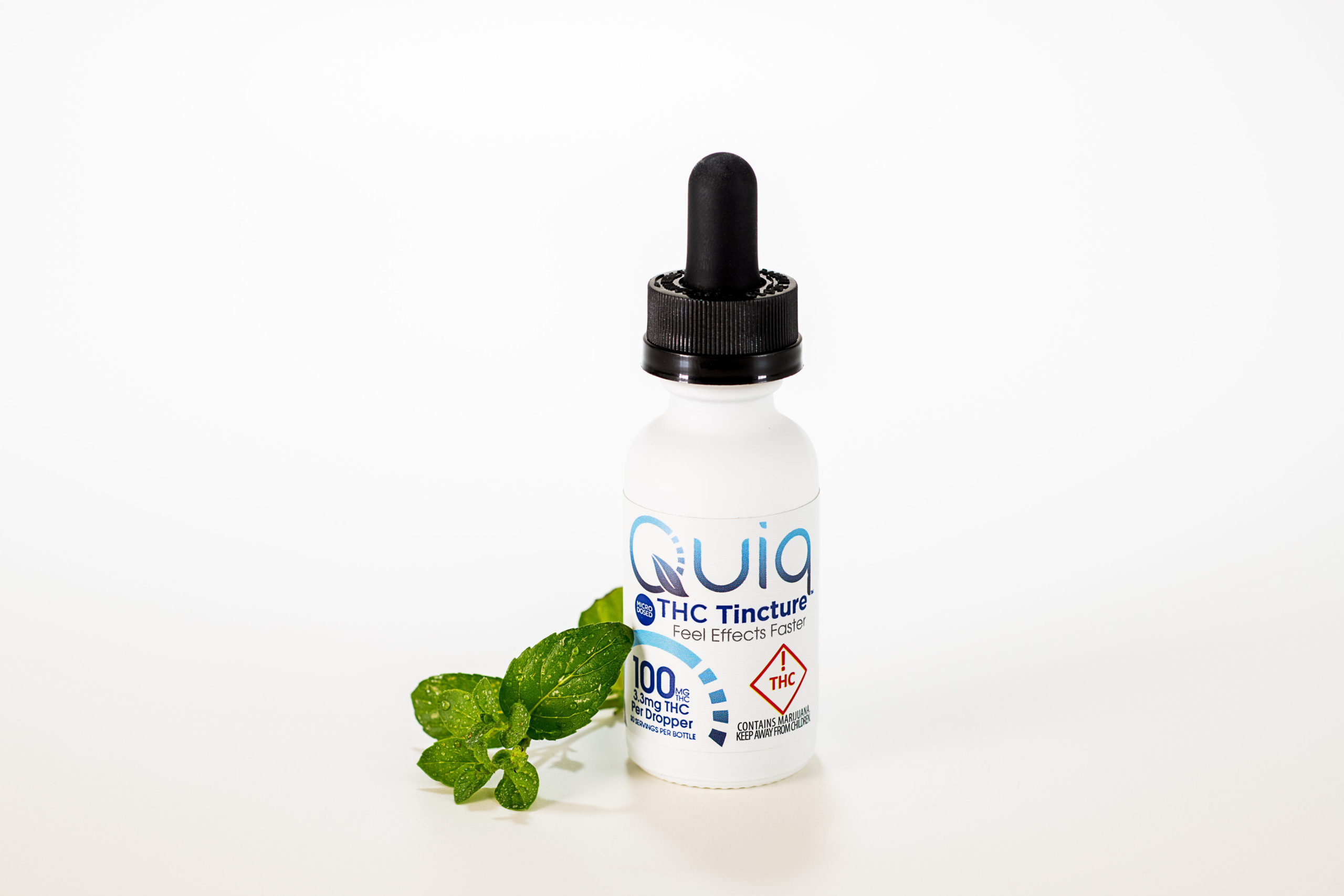
What Part of Yoga Practice Includes Cannabis?
This is entirely up to you. Most who combine yoga and cannabis consume prior to practice so that all parts of the practice are elevated by the plant. When it comes to the postures, a general rule of thumb is to stay away from poses that have a higher level of risk for injury, which will be different for everyone. For an average practitioner this includes handstand, headstand, and any other poses which require a lot of coordination, especially dropping back into wheel.
The effect of cannabis can enhance your innate state of oneness, so when it comes to meditation, you may find it easier to quiet the mind and drop into a meditative state, which is why many enjoy consuming and meditating.
CAUTION: Relying on any external substance to incite a state of being that is part of our true nature turns it into a crutch rather than a tool. Plus, cannabis has a tamasic effect on the mind and body, which in Ayurveda speaks to the dulling quality of something. Here’s a great article in the Yoga Journal that discusses more about this.
Integration is Key
It can be easy to rely on cannabis to practice yoga. If you’re not careful, you may find yourself resistant to practicing without it. It’s essential to give yourself several practice sessions without weed for every session you practice with it. Why? Integration.
During your cannabis-enhanced yoga practice, you’ll become aware of aspects of yourself you were once unaware of, such as how parts of your body relate to each other and patterns of thought within your mind. It’s important to practice feeling and recalling these things without the help of cannabis, because this integration helps fortify your nervous system to maintain this more optimal alignment on a regular basis.
Have fun with it and share your yoga and cannabis experience with us on Instagram by tagging @MedicallyCorrectLLC!
(Writer’s note: Be sure to talk with your doctor or health professional before beginning a physical yoga practice or introducing cannabis into your practice.)
The Five Most Common Types of Edibles Found in Dispensaries
From ancient to modern times, edibles have been one of the classic ways to consume cannabis. Edibles are food and drink products infused with cannabis flower or extracts containing THC, CBD, or both, and can be a delicious alternative to smoking and vaping. Nearly any food that contains oil, dairy, sugar or flour can be turned into an edible; and the recent emergence of water-soluble extracts has allowed for even more edible options, such as beverages. There’s really something for everyone, from unsweetened and sweetened baked goods to pills, and edible makers are continuously innovating their offerings.
Every producer of edibles has their own favorite recipes and processes, which means the flavors, textures, cannabinoid ratios, effects, and potencies can all differ. Depending on the type of edible you choose and your personal metabolism, the time it takes for the THC to enter your bloodstream, and for you to feel the psychoactive effects, could be anywhere between 30-90 minutes (or longer). However, more and more edible makers are beginning to offer fast-acting options for those who don’t want to wait very long to get elevated. These products typically kick in between 15-25 minutes but can take longer.
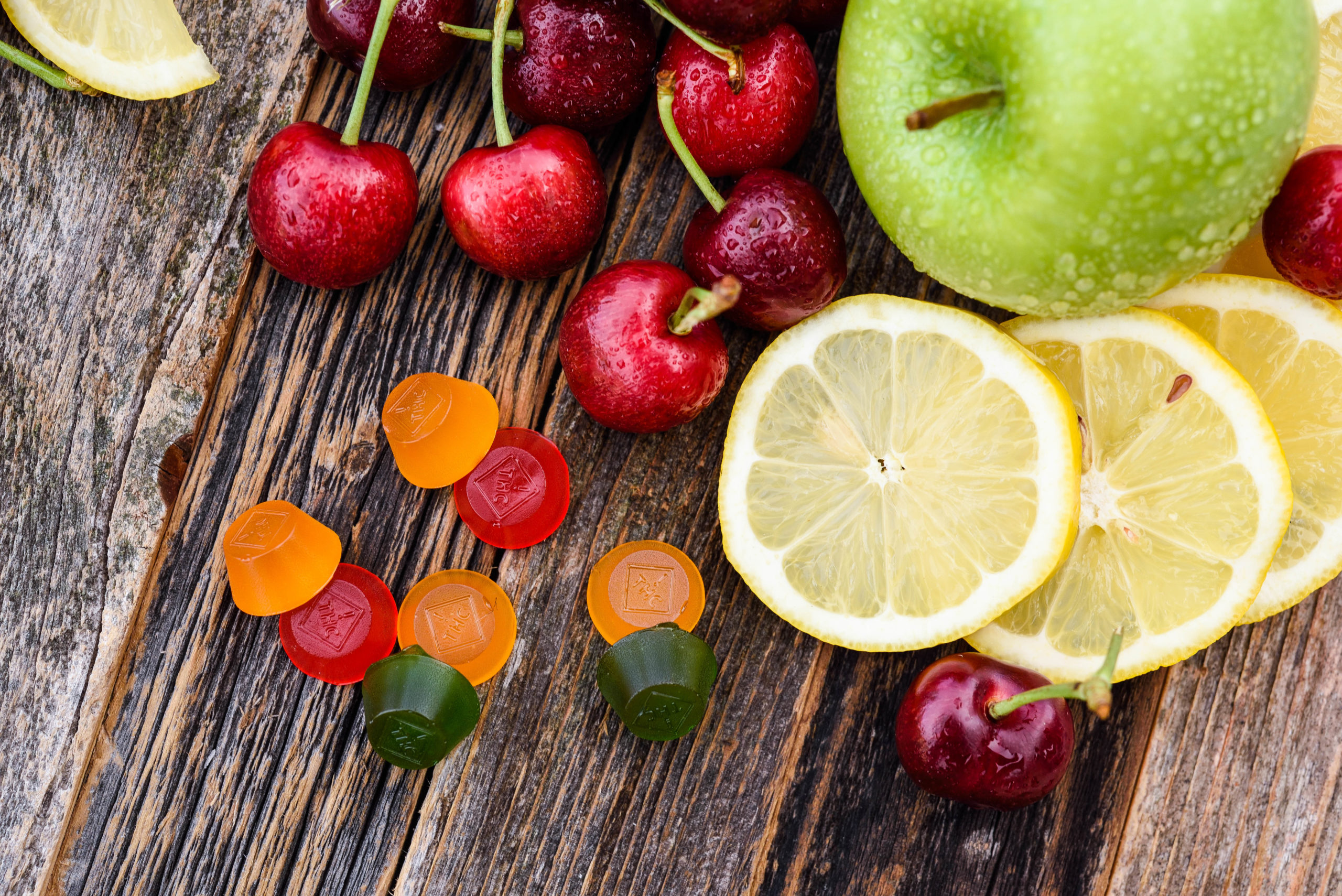
Most states have similar regulations regarding the amount of THC that can be infused into a single product for recreational use, which in Colorado, is 100 milligrams, often divided into ten 10mg servings or twenty 5mg servings. Medical regulations typically allow a higher amount infused into each product. Micro-dosing, commonly considered as taking a 2.5mg dose of THC, is rising in popularity as people are looking for a more functional high. Some makers now offer their products divided into 2.5mg doses to cater to this market.
Below, we’ll cover the five most commons types of edibles found in dispensaries to help you with deciding what to try next time you head to the store.
Gummies
Gummies are the most popular edible you can find, consisting of cannabis oil (usually flavorless distillate), sugar, gelatin or pectin, coloring and flavoring. For those who have a vegan diet or want to stay away from gelatin, an increasing number of producers are now offering vegan gummies, so they’re becoming easier to find.
Gummies are often marketed as sativa, indica, or hybrid, and the resulting effects are energizing, calming, or somewhere in between, respectively. Typically, there are additional terpene or botanical ingredients to help steer these effects. One example of this is including myrcene and/or chamomile for a relaxing effect. You’ll also find both regular and quick-acting gummy options.
Chocolates
Cannabis chocolates are the next most popular (and delicious!) option. The robust flavor of cannabis oil is mostly masked by the rich flavor profiles of the chocolate it’s infused in. You’ll find all sorts of variations including dark, milk and white chocolate bars and truffles, with or without fillings such a peanut butter or caramel. Most bars are scored in ten 10mg squares, and truffles in 5mg or 10mg pieces, so you can dose yourself with precision. You’ll find mostly regular onset options, although quick-acting options are out there too.
If you love chocolate, you’ll have an easy time finding it in so many other edible products, so be wary about going to the store hungry!
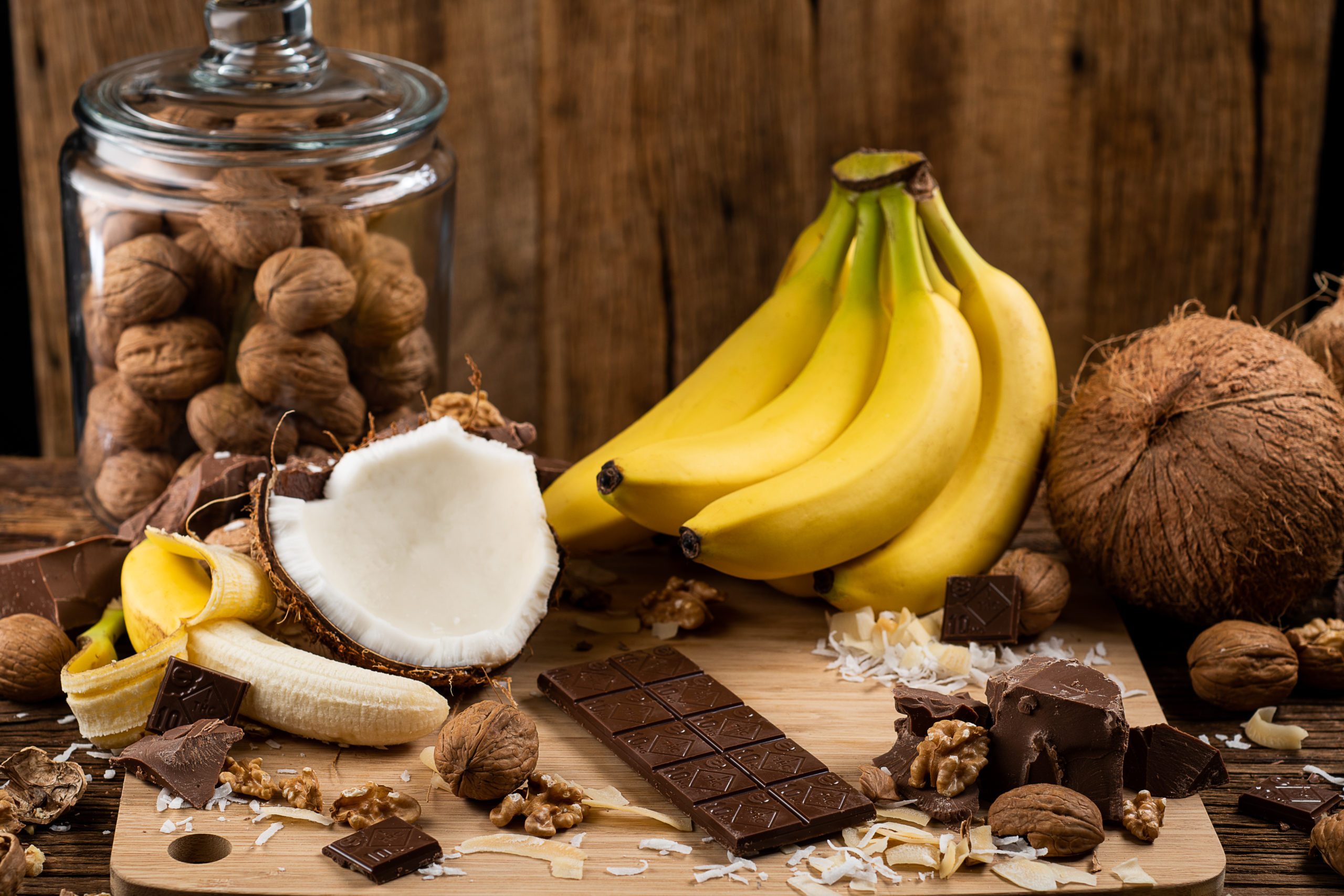
Beverages
Due to the aforementioned introduction of water-soluble cannabinoids, you’ll now find a wide array of beverages, such as soda, energy drinks, teas sold in bottles or a box of tea bags, and infused waters both still and carbonated. These are mostly sold as single servings, such as a can or bottle containing 10mg of THC or 5mg THC and 5mg CBD. However, some drinks will have dosing caps to pour off a single dose if the entire bottle contains several servings. You’ll find both regular and quick-onset options.
Tinctures
Tinctures are cannabis-infused alcohol formulas presented in dropper-top bottles. You’ll find many products labeled as tinctures that include MCT oil or glycerin in place of alcohol. Tinctures enter the bloodstream sublingually via the sublingual artery when held for 15 seconds or longer under the tongue. Some may be flavorful and sweet, while others may be virtually flavorless. Flavorless tinctures are versatile since you can take them orally or add them to recipes, smoothies, etc. High Times offers a great guide on navigating the world of tinctures.

Pills
As cannabis legalization continues to expand across the country, this category is rising in popularity. It’s a familiar delivery method that has very few additional ingredients and allows for very precise dosing. It is especially popular among the older generation, and those who cannot have sugar. Similar to other categories of edibles, there are both regular and fast-acting options available, as well as energizing, relaxing options and hybrid options.
Within all these types of edibles, you’ll find options with various ratios of CBD to THC available, indicated by 1:1, 2:1, 5:1, 20:1, etc. As you experience the effects of different products, you’ll come to learn your preferences. If you move to another state from Colorado, let’s say, your favorite brands may not be available due to the fact that cannabis is not legal nationally as of yet, so if you know your preferred ratio, you can use that information as a basis on choosing new products. (Brands do love hearing from their customers, so let them know if you can’t find them!)
Know that not all edibles are psychoactive. There’s a large market of full- and broad-spectrum CBD products in all the forms mentioned above which contain .03% THC or less. There are also products containing just CBD isolate, meaning there are no traces of other cannabinoids present.
One last note, a great reminder pertaining to edibles – start with a low dose to first gauge how your body responds, and then wait patiently. If you feel you’d like an additional amount, wait at least another hour or more so you don’t end up taking more than you’d like.
With all these options, what are you going to choose? Find the type edibles you most want to try at your local dispensary by browsing our online menu.
Everything Consumers Need to Know About Cannabis Vapes
Vaping is a relatively new delivery method for cannabis that has risen in popularity over the last several years. Vaping heats cannabis without igniting it, creating a vapor to disseminate cannabinoids and terpenes into your bloodstream through a vaporizing device that generates a fine mist. This makes them different from traditional smoking devices like pipes and bongs, which deliver smoke into your lungs.
The vaping sector of the cannabis industry has been developing quicker than the scientific community has been evaluating the potential health risks of both formulations and devices. As a result, it’s important to learn all you can so you can make the best decisions for yourself. If you take one thing away from this guide, it should be to always choose products from the legal, regulated market. Here’s everything consumers need to know about cannabis vapes.
Types of Vaping Devices
Vaping devices come in many forms, such as vape pens, e-cigarettes, dab pens, and desktop vapes. Although some devices allow you to consume both concentrates and flower, most are designed to be used exclusively with one or the other. Depending on your lifestyle, you may prefer one type of device over another. For example, if you’re always on the run, you may prefer a vape pen that you can keep in your pocket or purse. If you only consume at home, you may prefer a desktop device, such as the famous Volcano, to which a study the NIH published gave a stamp of approval.
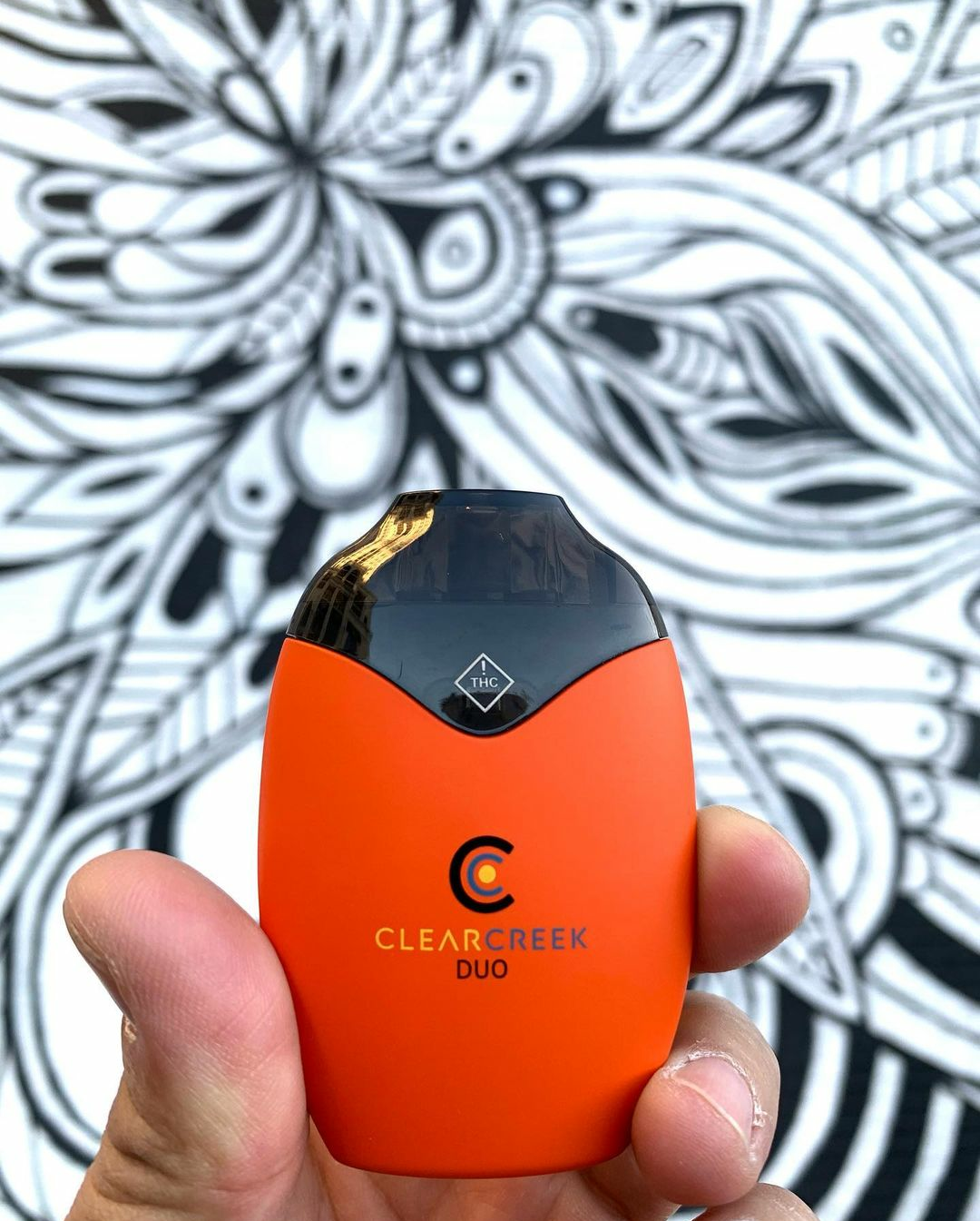
Whichever you choose, it’s helpful to have one that includes a temperature control since the flower or concentrate you vape may need a higher or lower temperature in order to deliver the maximum amount of cannabinoids and/or terpenes available.
Electronic cigarettes, popularly called e-cigarettes, are similar to vape pens yet are typically used with formulas containing nicotine to simulate tobacco smoking.
Types of Concentrates
There is also a wide variety of cannabis extracts or concentrates. For vape pens, distillate is most commonly used for its desirable potency, versatility, and typical lack of flavor or aroma. This refined oil has been stripped of all materials and undesirable compounds except one specific cannabinoid, such as THC or CBD. It can be used to dab, vaporize, and as an ingredient to make edibles, topicals and other cannabis products. Terpenes can also be added to distillates to create various flavor profiles and to alter the effects.
There are also other concentrates, like full-spectrum extracts, shatter, budder, wax, rosin and CO2 oils, which all contain more robust cannabinoid profiles that evoke different experiences.
Cannabis concentrates are thick, and many vape cartridges used in vape pens and e-cigarettes need a less viscous substance to properly vaporize. Thinners or cutting agents, such as PEGs (polyethylene glycols), glycerin, or MCT oils are used by many companies to liquefy these extracts.
Vaping vs. Smoking Cannabis
For those used to smoking cannabis, a common experience when vaping is a clearer high. However, people often debate whether vaping gets you higher than smoking, and if it’s better or worse for the body overall.
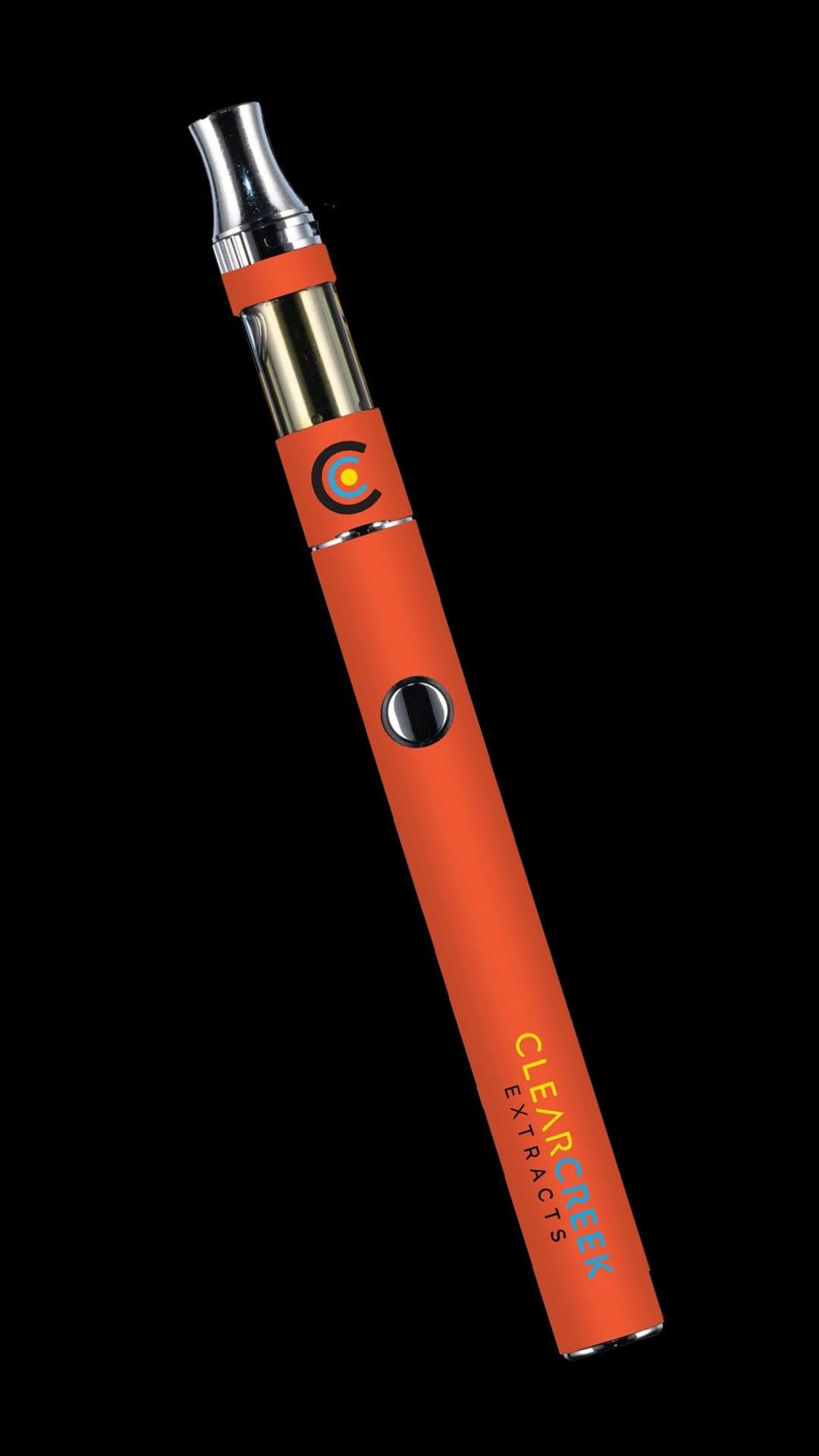
A study published by JAMA Open Network revealed higher quantities of THC in the bloodstream of the participants who had been vaping than those who had been smoking. The vaping participants also had higher levels of cognitive impairment and adverse effects, such as vomiting, hallucinations, and paranoia. It is believed this is mainly due to none of the material being lost to combustion, which means more THC enters the body.
When comparing the carcinogenic levels of cannabis smoke versus tobacco smoke, a study published by Dr. Robert Melamide revealed that cannabis smoke is not linked with lung or colorectal cancer, unlike tobacco smoke, yet is still potentially harmful. The carcinogenic potential of smoked cannabis has been largely eliminated by the development of vaporizers.
Benefits and Risks of Vaping
Let’s start with the benefits. Combustion does not occur in the vaping process and is why vaporizing cannabis flower is considered a healthier option over smoking. What’s currently being debated in the scientific community is if vaporizing concentrates is a healthier option than smoking, which seems to be determined by the type of vape device and amount of concentrate used.
For those who need a high dose of cannabinoids to manage their condition, whether it be a disease or other, vaping has been an ideal solution as it offers a quick, easy and discreet way to consume cannabinoids. It’s also harder to smell cannabis vapor than smoke.
The smell of smoke can linger for days, whereas vapor disappears quickly.
Now, the risks. Currently, the Food and Drug Administration (FDA) does not evaluate these devices and formulas. As a result, products have made it to market with questionable quality and additives, some of which have been FDA approved for ingestion. It is known that when heated, some of these additives can break down into toxic compounds, such as formaldehyde, which are carcinogenic.
In 2019, a public health crisis arose with an increasing number of people showing up in the emergency room due to lung injuries. As of February 2020, the Centers for Disease Control reported at least 68 deaths and more than 2,800 hospitalizations throughout the US due to vape pen lung injuries. The disease, referred to as VAPI or EVALI, is strongly linked to THC vape cartridges (most of which were purchased from the illicit market) containing vitamin E acetate, an ingredient that can cause harm when inhaled.
PEG and glycerin have been shown to undergo decomposition when they touch the heating element of a vaporizer, leading to the formation of toxic carbonyl compounds which have adverse health effects on humans. Stainless steel, ceramics, and glass are some high-quality materials companies can use in their devices to avoid creating these toxicities.
Vaping Safety
With the frequent increase in options of vaping devices and formulas, it’s paramount for consumers to understand the importance of consuming high-quality ingredients with high-quality vaping devices for the best and safest experience possible.
The illicit market, also known as the black market, typically offers radically cheaper devices filled with concentrate formulas that include harmful, hidden ingredients. Using these devices and consuming these products are highly risky because they aren’t lab-tested and are completely unregulated, so you truly will not know what you’re putting in your body. Exposing your lungs to cutting agents, residual chemicals, and artificial flavorings won’t be worth saving a few dollars in the long run.
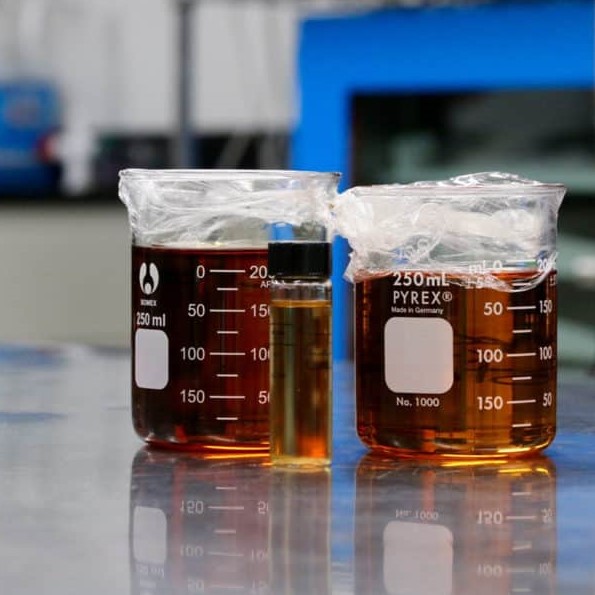
Choosing lab-tested products from the regulated market cannot be stated enough. Ask the budtender at your local dispensary for more tips regarding cannabis vaping, and explore trustworthy products from manufacturers like Clear Creek Extracts.
The Top 4 Reasons Why Consistency Matters When It Comes To Cannabis Edibles
Before the regulated industry, cannabis consumers who desired the relaxing, body-encompassing high of edibles sought out cannabutter recipes and baked infused treats in their own kitchens. However, because cannabis flower grows in a wide range of potencies and there was no method of testing homogeneity, the effects of the homemade pot brownie were inconsistent. Now, licensed manufacturers test their edibles, allowing new users and those with low tolerances to experiment safely — but it’s more than just that. Here are the top 4 reasons why consistency matters when it comes to cannabis edibles.
1. Consistent Edibles Ensure A Safe Experience
Though obvious and mentioned above, consistent dosing ensures that the edible consumer is aware of how much THC they’ve ingested and what to expect before the effects kick in. Unlike smoking or vaping, which provide nearly immediately psychoactive effects, the onsite time of edibles is far longer. Traditionally-made edible marijuana products generally take 30 minutes to as long as 3 hours for noticeable changes in perception, and this delay is often the reason new users overindulge.
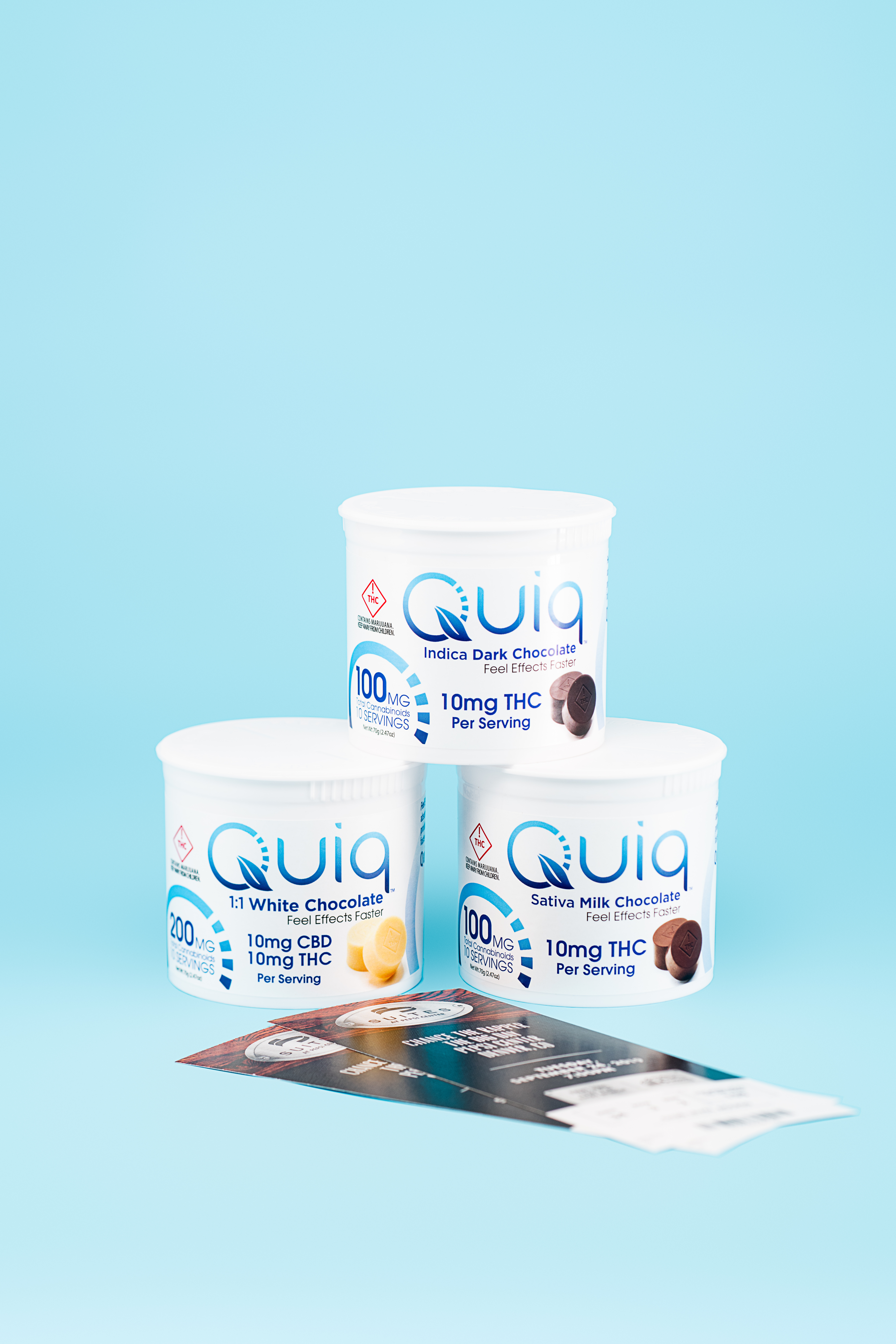
Just as you shouldn’t exceed the recommended dosage for pharmaceuticals, or eat three slices of your grandmother’s pound cake, overconsuming cannabis is not a good idea.
Avoid an uncomfortable experience and follow our mantra: start low, go slow. If the wait time causes you to be hesitant about experimenting with edibles, know that new, fast-acting products are becoming increasingly available at dispensaries. For example, Quiq, an innovative line made with rapid absorption technology, allows users to feel effects in just 5-15 minutes.
2. You Save Money When You Buy Edibles from Licensed Dispensaries
For anyone who’s shopped in a licensed dispensary, this may seem untrue. Flower always appears to be priced more affordably than edibles, right? Why not just buy an eighth and make your own infused goods at home? Well, consider this: when making a homemade edible, you’re unsure about the dosing and are significantly more likely to overconsume, thereby wasting your precious, and often expensive, cannabis flower.
In addition to that, if you’re cooking with cannabis at home, you’re likely creating cannabutter in a baked good. Brownies, rice cereal treats, and cookies are most common -- but consider shelf life. In a few days, those delicious confections will go stale; again increasing your likelihood of waste.
Infused chocolate bars and candy crafted by industry experts are made to last up to several months. Plus, the majority of adult consumers only need 5-10mg of THC to feel effects, meaning a 100mg edible package, the standard in most dispensaries, provides 10-20 uses. Not too bad for $15-20!
3. You Can Confidently Make Recommendations to Friends and Family
If you’re a medical cannabis consumer, which many of us are, it wouldn’t surprise us if you have a testimony about how the plant has changed your life for the better. Most of the team at Medically Correct can relate! Whether you’ve experienced a reduction in stress, pain, or otherwise, you’ve likely shared your success with those who you’re close to.

But as Leafly points out, many popular strains which share the same name are, in fact, quite different in terms of cannabinoid and terpene content, and that means effects can vary significantly. They found that Durban Poison and Pineapple Express are among the least consistent. You might love these strains, but maybe you’d shy away from recommending them to a friend, as they might have a completely different reaction.
Now, edibles are a different story. To ensure quality control, edibles’ THC is added in the form of an extract, which can be precisely measured down to the milligram. Not just that, but when creating an extract such as distillate, nearly all of the plant’s lipids, terpenes, and cannabinoids are stripped away except for THC. This simplifies your body’s reaction and unlike individual’s responses to various, complex strains, overall, isolated THC produces a very consistent effect from person to person.
4. Consistent Edibles Allow You To Enjoy Your Favorite Flavors, Time and Time Again
Just as you’d expect your favorite grocery store items to taste the same across all retailers, cannabis businesses are aiming to create that same trust and dependability for their edible products. As more and more states legalize marijuana, the market has expanded to include more knowledgeable consumers that demand not only consistent THC dosing, but also reliable quality and flavor.
While any edible product you buy at a dispensary requires lab testing for THC content, deliciousness isn’t always a guarantee. For the best experience, we recommend that you choose premium edibles created by established companies, as industry expertise often translates to better ingredients and more knowledgeable chefs.

Where To Find Consistent Cannabis Edibles
Now that you understand the importance of consistency and the benefits of purchasing edibles from a licensed dispensary, are you curious where to shop? In Colorado, you can order online and pick up from your local dispensary; and if you’re a fan of Medically Correct, discover where to find our brands and products by visiting our store locator.
What’s your favorite edible? Do you have any tips for new consumers? Comment your suggestions below, and share this post on social to continue the conversation!
What Are Terpenes and Why Should You Care?
The distinct aroma of cannabis – some love it, some don’t – but either way, what creates this unique fragrance is something quite complex and powerful – terpenes. What are terpenes? And why should you care? Knowing what they are and what they do will give you a new appreciation of this sacred plant, so let’s dive in!
Think of terpenes as essential oils, the aromatic compounds that give blueberries their blueberry taste and lavender its lavender smell. Although they are under researched at this time, they are among the fastest growing areas of interest in cannabis due to their potential influences on cannabis experiences and their many potential medical benefits. We do know that some terpenes may be pain relieving, sedating, energizing, anti-inflammatory, or antiviral (and the list goes on). Terpenes play an important role in the effects of CBD and THC through the entourage effect, which we will come back to a bit later. Here’s an easy way to wrap your head around how they work together – cannabinoids, such as THC and CBD, are like the engine of a car, and terpenes are like the steering wheel.
There are around 120 different cannabis terpenoids that have been identified so far, and when you learn what the terpene profiles are in various cannabis strains, you can start choosing strains based on how you’d like to feel.
Common Terpenes
Here are a few of the most common terpenes you’ll find in your favorite cannabis strains and what science has revealed about their primary potential therapeutic benefit.
- Myrcene = Relaxing. Myrcene smells like cloves and herbs. It is the most common terpene in cannabis, and you can find high levels of it in strains like OG Kush, Blue Dream and Grape Ape. Also found in lemongrass, thyme and mango.
- Limonene = Energizing. Limonene smells like citrus, and inhalation of limonene increases serotonin and dopamine levels in key regions of the brain that are associated with anxiety, depression and stress. Look to strains such as Super Lemon Haze, Banana OG and Wedding Cake for high levels of limonene. Also found in citrus fruits, peppermint and eucalyptus.
- Beta Caryophyllene = Pain relieving, anti-inflammatory. Beta Caryophyllene acts as a cannabinoid, activating CB2 receptors of the endocannabinoid system. It has a woody and spicy smell. High levels are found Death Star, Bubba Kush and Sour Diesel. Also found in hops, cloves, rosemary and black pepper.
- Pinene = Soothing, comforting. Pinene smells like pine and is great for opening bronchial passages. You’ll find high levels in strains such as Purple Kush, Snoop’s Dream and Critical Mass. Also found in pine needles, basil, parsley, and dill.
Terpenes & the Entourage Effect
The term entourage effect was created by professors, S. Ben Shabat and Raphael Mechoulam, to represent biological synergy of cannabinoids and other compounds, such as terpenes. A central understanding of the use of botanical remedies is that herbs contain many active ingredients. Primary active ingredients may be enhanced by secondary compounds, which act in beneficial synergy. Other herbal constituents may mitigate the side effects of dominant active ingredients.
Terpenes interact with our endocannabinoid system and assist cannabinoids in entering the bloodstream through the entourage effect. Ethan Russo, a leading medical cannabis doctor and researcher, says that cannabinoids and terpenoids are half-siblings and that terpenes are critical components to the medicinal effects of cannabis. He also found evidence showing that terpenes can enhance the beneficial effects of THC and reduce its adverse effects.
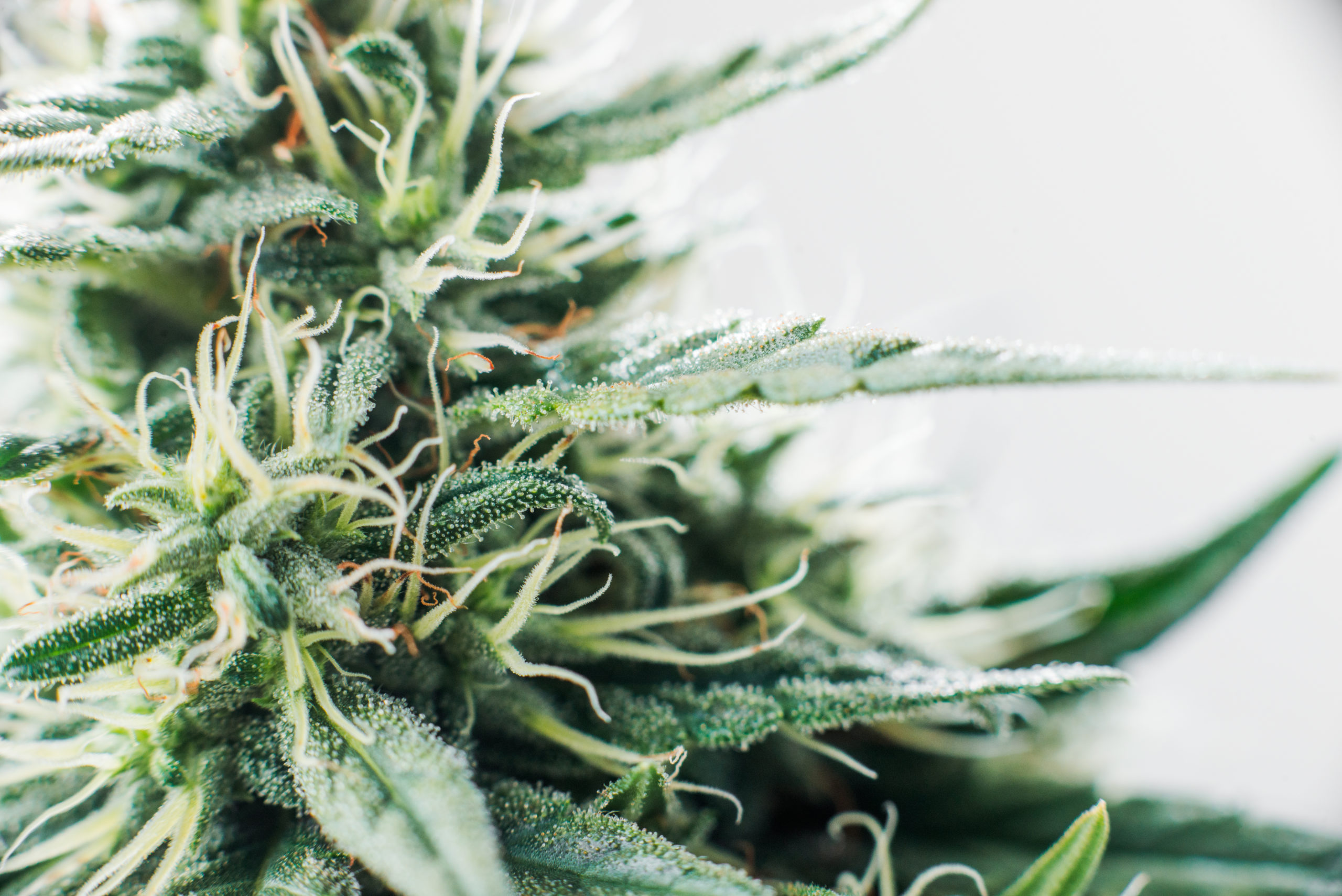
How Consumption Methods Affect the Effects of Terpenes
The effects and benefits of terpenes can vary based on the consumption method utilized. With inhalation of flower or extracts, many of the fragile terpenes are lost due to the high heat of direct fire, especially via smoking. Vaporization, on the other hand, allows for greater temperature control and can reduce the number of terpenes lost, giving this inhalation method greater access to their therapeutic benefits and a fuller flavor profile.
With oral consumption of edibles, much more research is needed to fully understand the effects. What has been revealed so far are various beneficial digestive effects. For example, myrcene has been found to reduce the formation of ulcers in the stomach and small intestines, linalool has shown to protect the liver from damage, and limonene has shown to have similar benefits to myrcene and as an edible digests, may also increase the absorption of the cannabis compounds through the stomach and intestines.
Now that you know about terpenes, you are more likely to understand why you should indeed care. It’s important to note that since everyone is different, you may have an entirely opposite experience from a terpene or terpene profile than that of another person. Experiment with caution and keep notes with which terpenes you consume along with pertinent dosing information, so you can use your own data to guide your future purchasing decisions.
A Guide to Cannabis Tourism in Colorado
The cannabis industry has much in store for you here in the land of the good ‘ole Rocky Mountains. With sales hitting nearly $1.75 billion in 2019 alone, Colorado is home to the nation’s longest-established recreational cannabis industry – and it aims to please. As the first state to legalize, Colorado is a destination for cannabis tourism.
If you’re new to cannabis and preparing to visit your very first pot shop or perhaps on a road trip to check out Colorado legalized recreational scene, it can feel overwhelming given all the options of where to shop, how to shop, what to buy, and where you can/can’t consume. But have no fear, we’ve put together a helpful guide for you to navigate with ease.
How to Find a Dispensary & Your Perfect Cannabis Product
Two websites you’ll want to bookmark are Weedmaps.com and Leafly.com – these are the best store and product locators, plus they offer a plethora of information on all things cannabis such as strain information, news, and deals. If you plan to navigate around on your own, they will be your best friends!
Unless you have a medical marijuana card, you’ll want to stay clear of anything labeled MEDICAL or MED, and instead look only for options that are labeled RECREATIONAL or REC. Some stores like the famous Native Roots dispensaries have both MED and REC options and are labeled as such.

If you’d like some extra support, cannabis tours are where it’s at! My 420 Tours offers guided tours of shops and even grow operations, where you can have an insider look at how cannabis is grown. Need help finding 420-friendly accommodations or transportation? They can help with that too. While you’re at it, check out some other fun cannabis tourism activities such as Puff, Pass, and Paint or Kush & Canvases to socialize with other cannabis lovers while bringing out your artistic side. (Note: COVID-19 may have affected some operations)
The primary categories of cannabis products are edibles, flower, vape, concentrates, and topicals. There are plenty of options within each of these categories, so it’s helpful to get clear on what product categories you’re most interested in:
• Looking for some energy and knee pain relief while trekking up a 14er? Edibles formulated with caffeine and/or energizing herbs are a great option, as well as topicals for acute pain relief.
• Are you looking to taste various flower strains? You can purchase high-quality bud from a gram up to as much as an ounce. Pre-rolls are joints ready to be smoked, which you can buy individually or in packs. Just know that the potency of flower these days is A LOT stronger than it used to be.
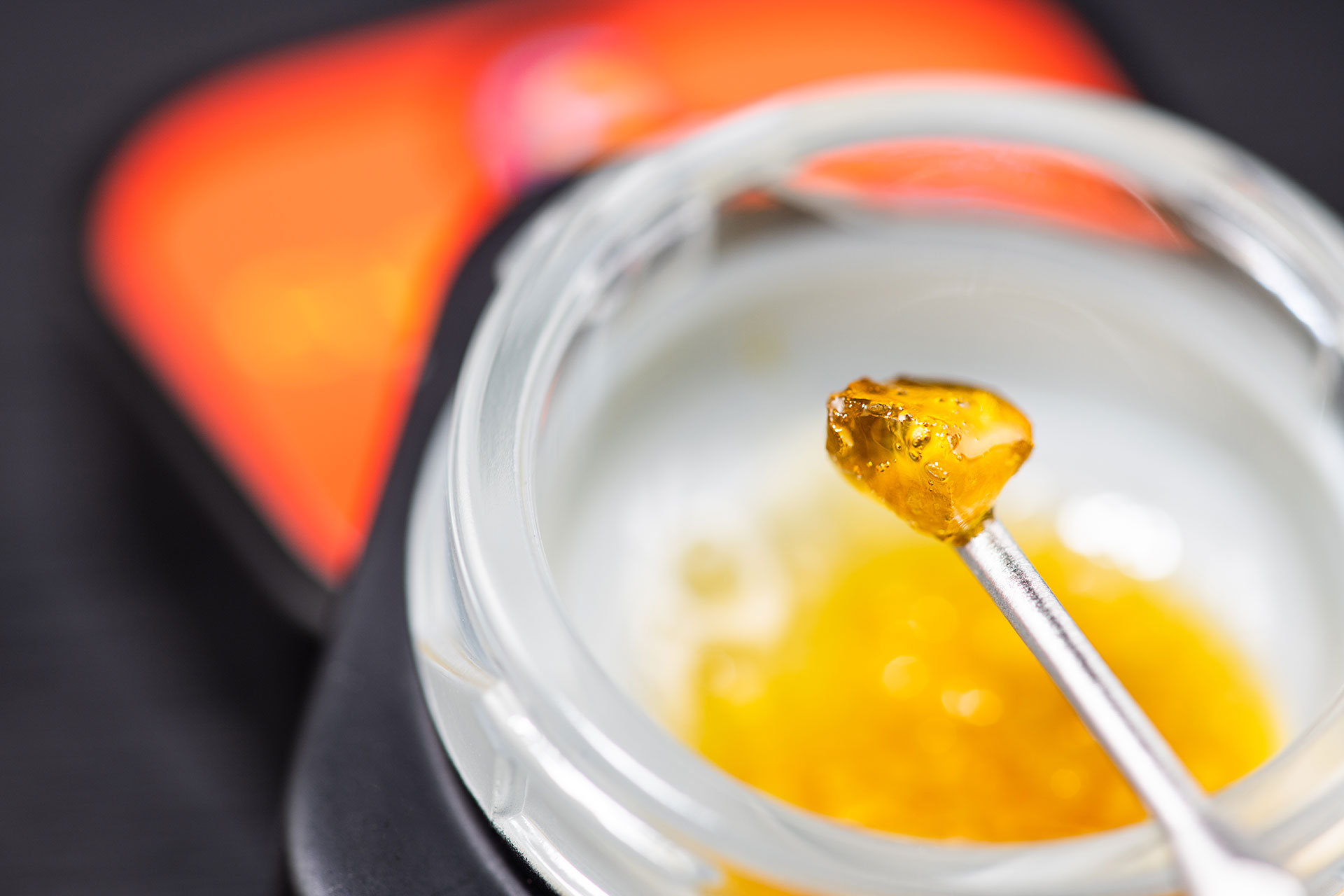
• Is a dabbing experience what you’re after? Concentrates will be your focus. This form of cannabis is the most potent available. You’ll need a dab rig or dab pen, and some stores carry these accessories for you to purchase.
• Perhaps you’re looking for something discreet and long-lasting to consume during a convention or a week-long seminar series? Edibles are an ideal choice. You can find all sorts of varieties from drinks to snacks, traditional onset to fast-acting, zero-calorie to full on sugar and fat…the sky’s the limit here!
What To Expect At a Dispensary
When you arrive to a dispensary, you’ll be greeted by either a security guard or front desk representative who will check your ID upon entry, so have it ready and keep it handy until you finish your purchase. (See this list of acceptable forms of ID). Be prepared to wait - there’s a limited number of people who can be inside the retail space at one time. If anyone in your party is under 21, they’ll have to remain outside the store. If you are part of a cannabis tourism group, they will give you details as well.
After checking in, you’ll be guided to shop one-on-one with a budtender to help you find the perfect products. Don’t be afraid to ask questions… that’s what they’re there for. If you’ve never consumed or haven’t consumed since high school, there are a lot of terms that will sound foreign to you, and budtenders are your best resource in the moment, so leverage their help! If you’ve done your research ahead of time, let them know what you’re looking for. If you have no idea what you want, be sure to tell
them how you’d like to feel, what your experience level is like, and ask for an overview of their offerings.
Most stores are cash-only, so bring cash or a debit card as most stores also have an ATM onsite. You can purchase up to one ounce of cannabis or equivalencies per day. The dispensary won’t record your name or divulge it to the government; however, staff are trained to watch for repeat customers who attempt to purchase more than the legal limit in one day.
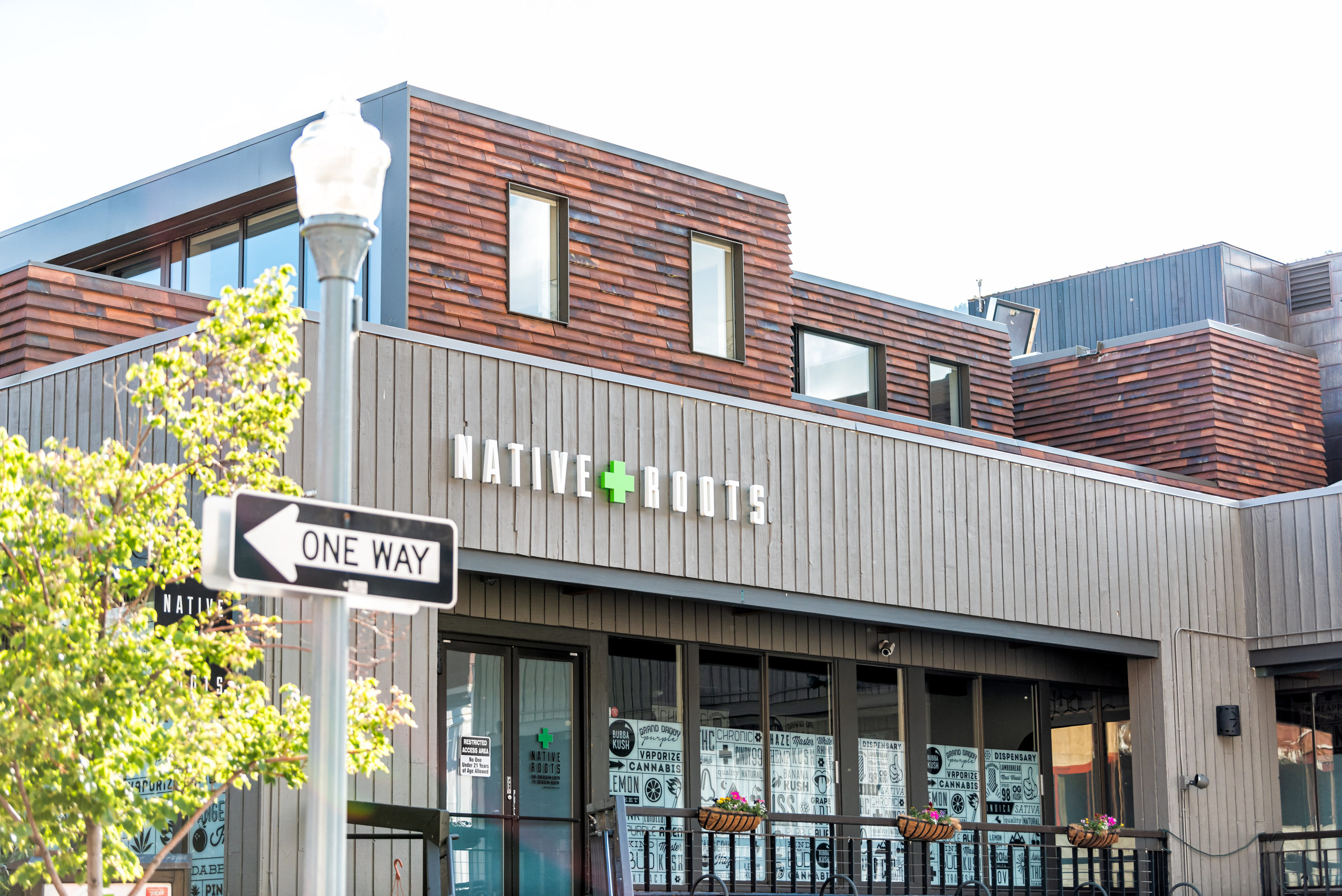
And know that it’s good etiquette to tip your budtender, especially if they spent a decent amount of time with you. Here’s some tipping insight for you to consider.
What You Need to Know About Legal Consumption
Just because you can walk into a store to buy weed doesn’t mean you can consume it anywhere. At this point in time, unfortunately, the restrictions on where you can and cannot legally smoke marijuana are vast. Smoking in public or in your car are big universal no-no’s! Your best bet is a private home, yet if
you don’t have that luxury there are some 420-friendly hotels and members-only cannabis clubs
throughout the state where you can pay for daily memberships.
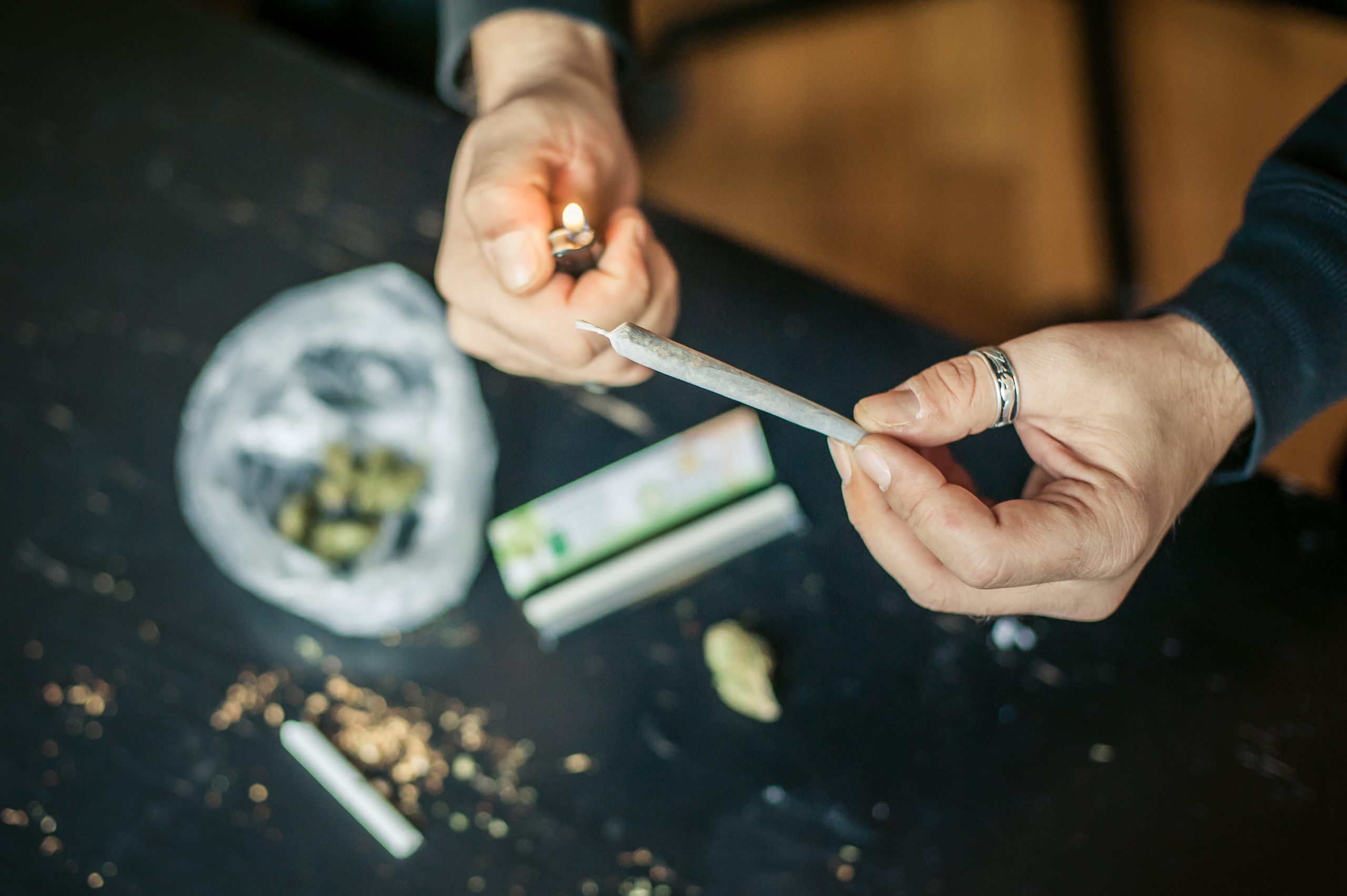
Each city has its own rules, so it’s helpful to know what to expect depending on where you’re aiming to go. For example, Colorado Springs is medical-only, so unless you have a medical card, you won’t be able to purchase from any pot shops in that town. There are also resources like cannabis tourism websites and activities to turn it into a full cannabis tourism experience. Resources like Westword can give you further information into popular destinations and further specificities on the laws.
And keep in mind, crossing state lines with your Colorado cannabis is illegal and can lead to an arrest if you’re pulled over, especially if you’re caught drugged driving. Due to the large number of people who visit Colorado intending to purchase cannabis to bring back home, cops are known to keep watch for cars exiting the state.
Wherever you choose to go and whatever you choose to consume, be smart, be safe, and go slow! You can always consume more, but you can’t consume less. Purchase cannabis products from a legal market, where industry leaders have set standards for third-party lab testing, encouraging consistency and safety.
The History of Cannabis Chocolate
From ancient prophetic brews to the cult-classic pot brownie, cannabis edibles in both food and drink form have been on a global journey through digestive systems everywhere over the last few thousand years. Let’s travel back in time through the present, taking a brief look at the history of cannabis chocolate so you can learn why cannabis edibles are now in such high demand.
Let’s start with the ancient Chinese emperor, Shen-Nun, who ruled around 2,700 BC and is known as the Father of Chinese Medicine. He documented various uses of cannabis medicinally. It seems the Chinese were the first in recorded history to ingest cannabis and introduce it as a medicine to the world. However, the earliest recorded cannabis edible was in the Indian subcontinent. It is here that the native people have prepared food and drink with bhang as early as 1,000 BC, for both spiritual and medicinal purposes. This is also where the world’s most sought-after Kush cannabis strains originated.
Fast-forward to the 1800s when people in the United States began making cannabis tinctures, candy, and other infused foods. These were all sold as commonly as toothpaste and even advertised in local newspapers. In more modern times, cannabis-infused food was credited to the publication of The Alice B. Toklas Cook Book in 1954. In it, she included a recipe for “hashish fudge”, a baked good based on an 11th century Moroccan sticky confection recipe, majoun. This sweet treat resembles a truffle. It contains aromatic spices along with cocoa powder, honey, butter, nuts, dried fruit, and of course, hash. Many say the pot brownie was born from this recipe. Now in 2021, many top chefs are even crafting their own edibles.
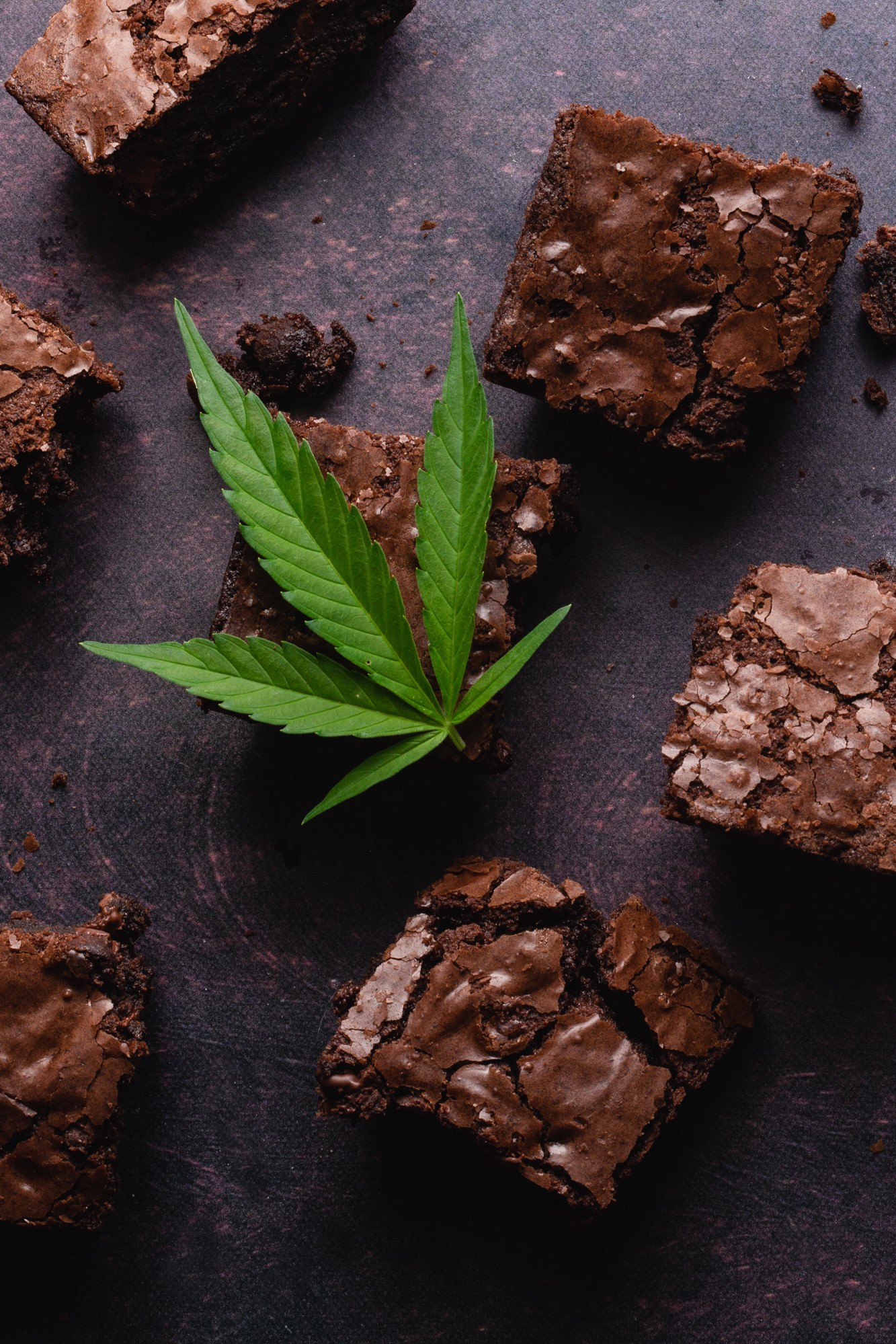
The Emergence of the Cannabis Industry
Everything began to change once the Pure Food and Drugs Act of 1906 went into effect. This laid the foundation for future cannabis prohibition. Over the course of the following three decades, cannabis became illegal to include in any formulations. The government was also able to start arresting people for cannabis offenses, which has unfortunately continued through to this present day.
The country slowly started coming back to its senses in the 1970s when some states began decriminalizing cannabis. In 1996, California led the way with medicinal legalization through the Compassionate Care Act. This movement was driven by the efforts of the legendary Denis Peron, who co-founded the first semi-legal dispensary in the United States and teamed up with the infamous Brownie Mary, a 69-year-old activist. Together they distributed cannabis edibles to patients in need of pain and nausea relief. Since then, the path of legalization has been far from easy.
The Early Days of Manufacturing Edibles
During this phase of development, industry regulations regarding cultivation and manufacturing practices did not exist. Picture this: Mrs. Smith procures cannabis extract from cannabis flower she grows herself. In her home kitchen, she bakes it into infused foods such as candies and brownies. She then sells them wholesale to her friend who has a dispensary, who sells them to their patients. All of this was done with no tracking systems in place. Edibles could be made in anyone's kitchen without lab tests; hence, dosing was highly inaccurate and inconsistent. Quality was questionable. As a customer, you’d just hope for the best.
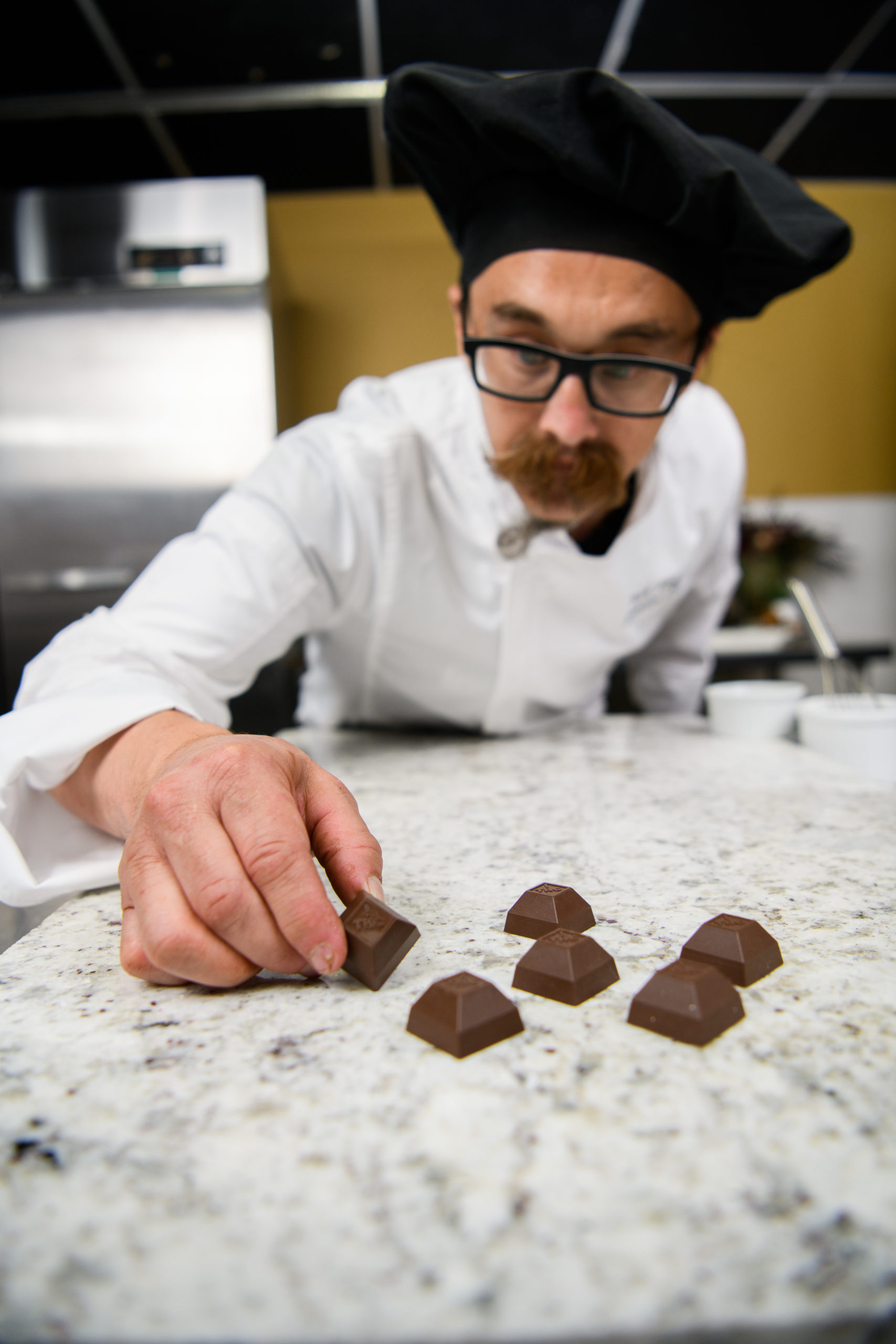
The Industry Puts on a “Suit and Tie” (without help from the government)
Still to this day, due to the federal regulation of cannabis as a Schedule 1 substance, the FDA does not regulate edibles. Individual states had to take it upon themselves to create a greater level of safety, consistency and quality. Industry innovators, such as Medically Correct, have led the way to craft safety regulations. States then adopted and enforced these regulations to protect the cannabis consumer and establish integrity in business practices.
As alluded to previously, consumers could get an edible with a descriptor as vague as “two-times the strength” one week. An edible from the same manufacturer with that same descriptor the next week could have a totally different effect. Before it even became mandated, Medically Correct committed to testing for activated milligrams of THC. They added this along with nutritional information on their product labels. This early focus on consistency and quality helped propel them to the top of the Colorado edibles market, which was the first in the nation to become a highly regulated market.
Why Chocolate Edibles Are In High Demand
As the variety of products available in the market began to rise, it became increasingly difficult for stores to carry chocolate-based baked goods due to their short shelf-life. This created a need for shelf-stable alternatives to items such as the cult-classic edible brownie. Enter the cannabis chocolate bar! This became an ideal solution for manufacturers, retail operations and consumers alike. Not only is it a familiar delight, it also allows for more precise dosing and longer shelf-life.
If you were to taste cannabis extract all by itself, you’d undoubtedly notice its pungent and bitter flavor. Chocolate, especially dark chocolate, has rich complex notes which are a perfect ingredient to mask these less than desirable flavors. Plus, when chocolate is infused with cannabis, the naturally occurring fat from the cocoa butter supplies the necessary lipids to help the body process it.
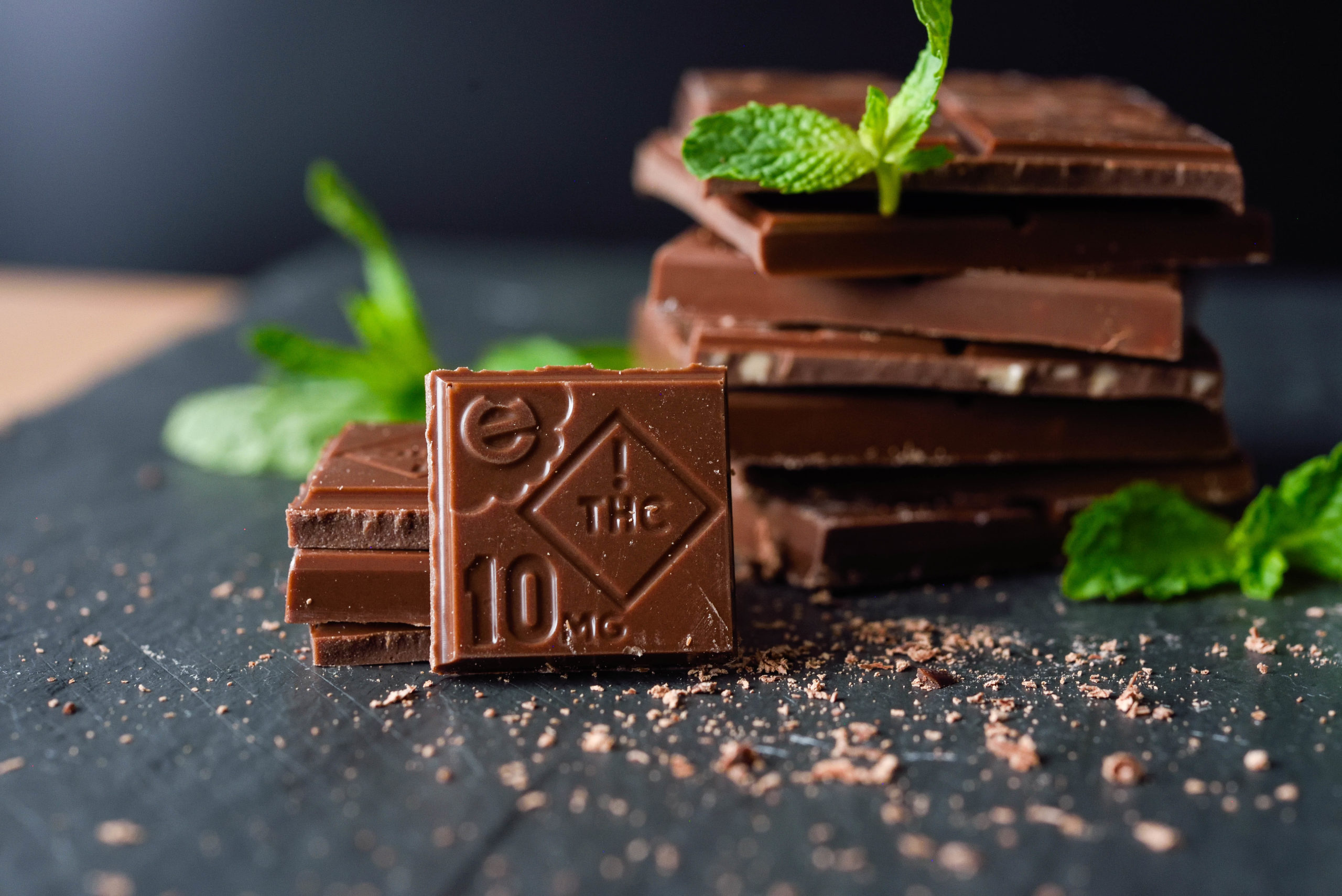
Combining cannabis with chocolate also has a chemically synergistic effect. In a nutshell, cacao beans produce a type of cannabinoid that the body itself also produces, called anandamide. It plays an important role in managing issues such as pain, mood, and appetite, and has similar effects to THC. Chocolate also contains theobromine, an alkaloid and caffeine-relative, and a known vasodilator that helps deliver nutrients and chemicals into the tissues. This creates an enhanced, elevated experience that lasts even longer.
__________________________________
Some trivia for you: Why does food taste so much better when you’re high? Well, cannabis is known to heighten sensory perception. This is due to THC binding with certain receptors in areas of your brain involved with your senses. Overall perceptions of yourself and your surroundings increase, including brighter colors, stronger smells, and richer tastes. YUM!
If you’re new to consuming cannabis edibles, check out this helpful guide to understand how eating cannabis is different than smoking it.
Be a savvy cannasseur and check out the delicious selection of Medically Correct’s cannabis-infused chocolates by visiting our Shop Now page.

